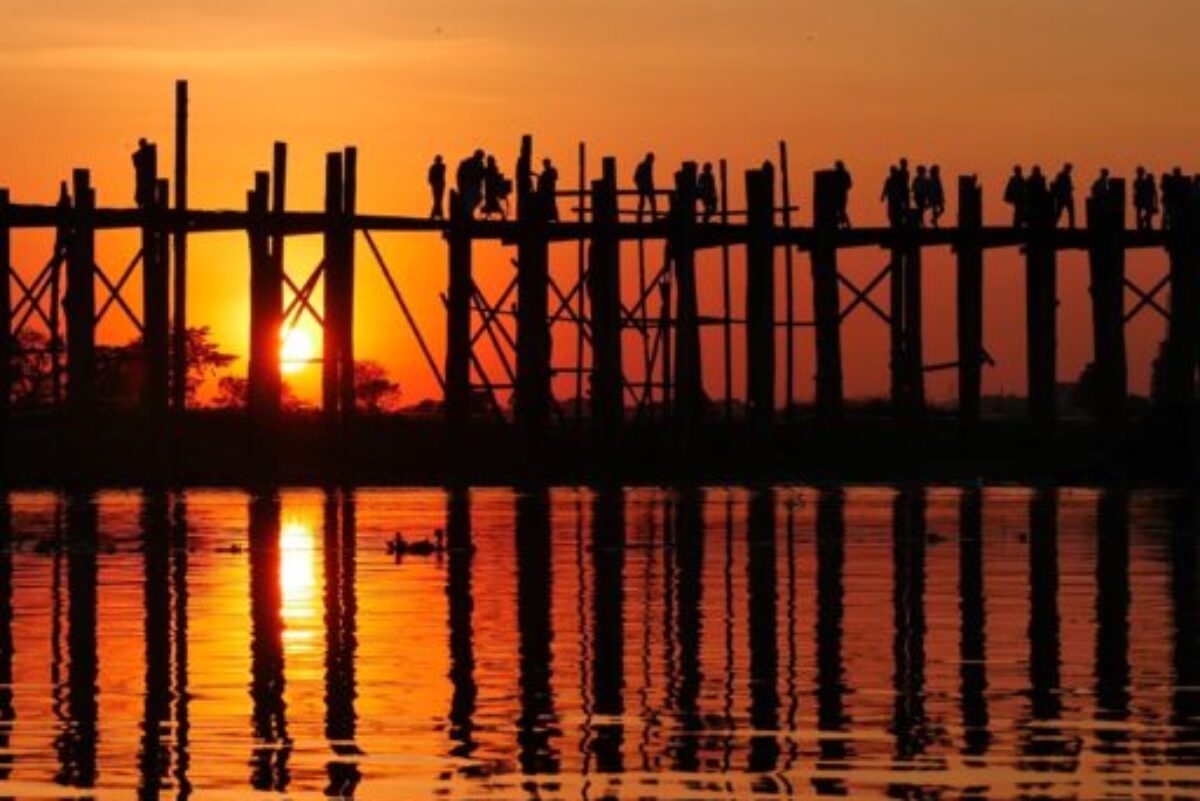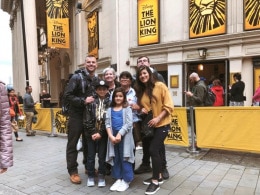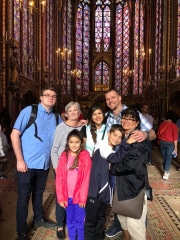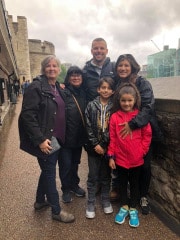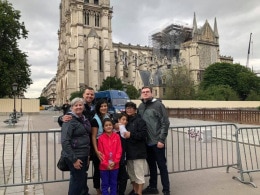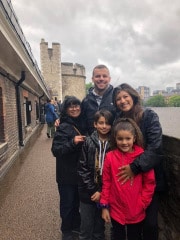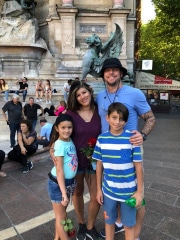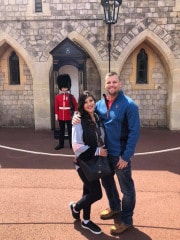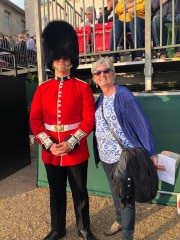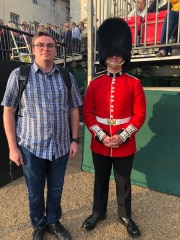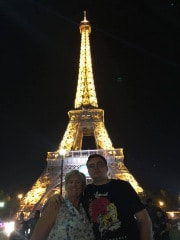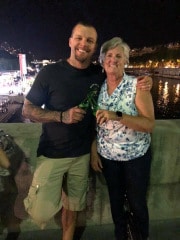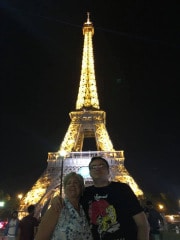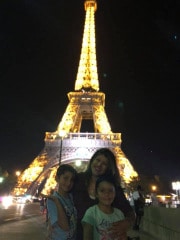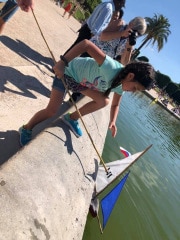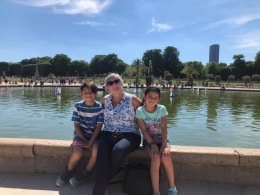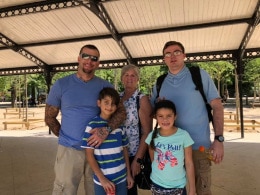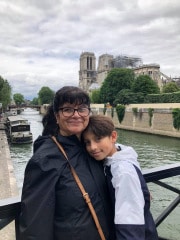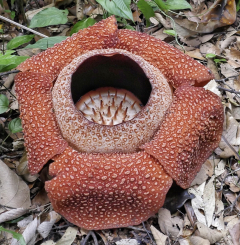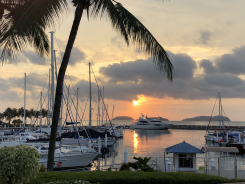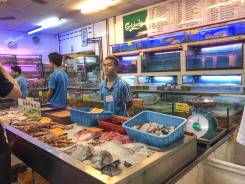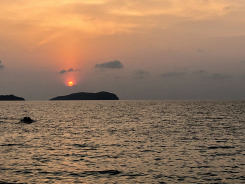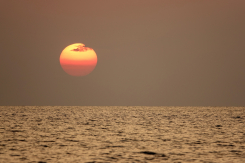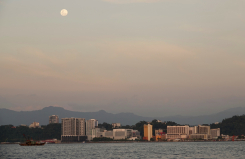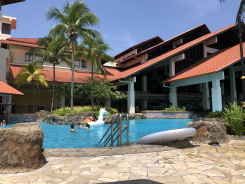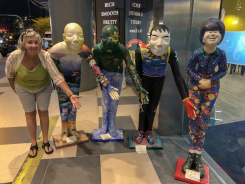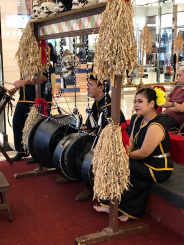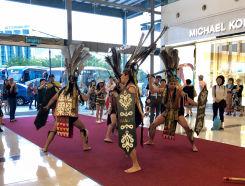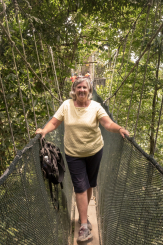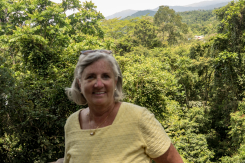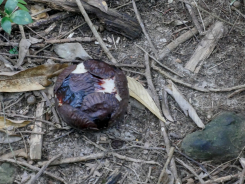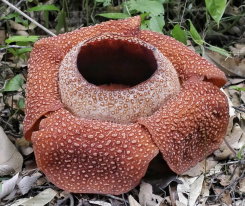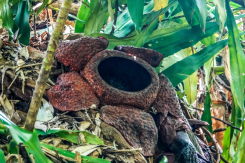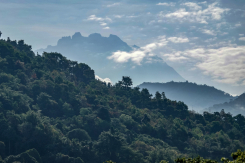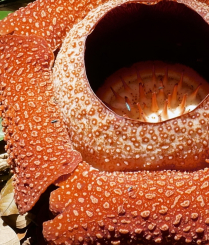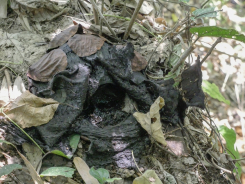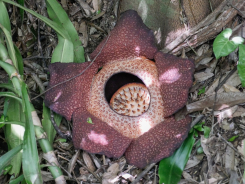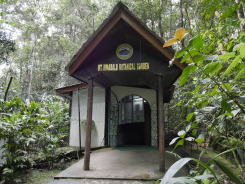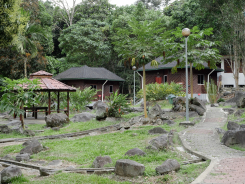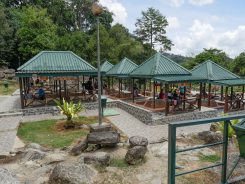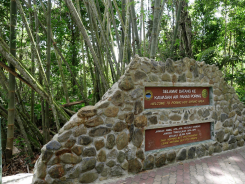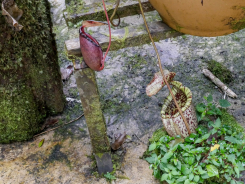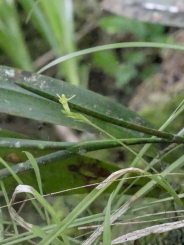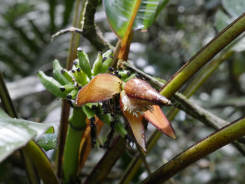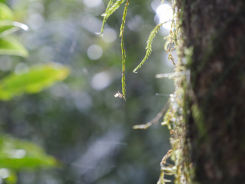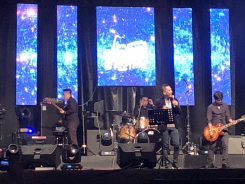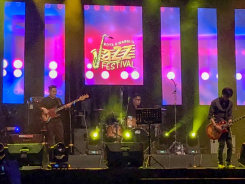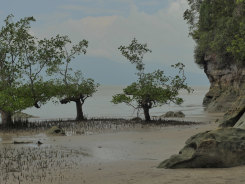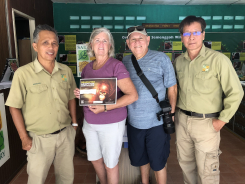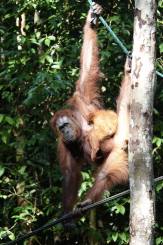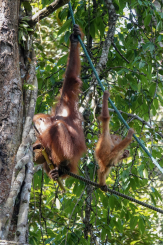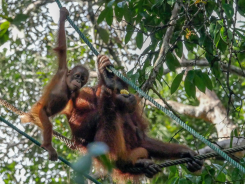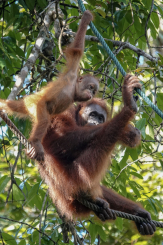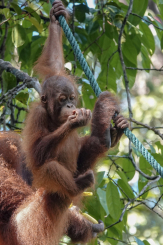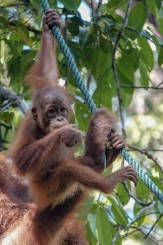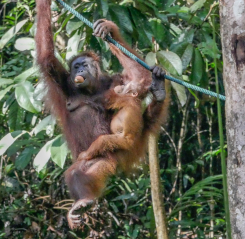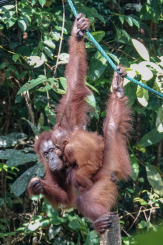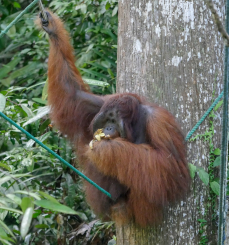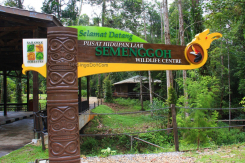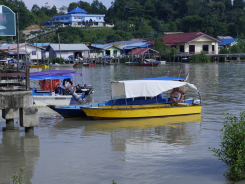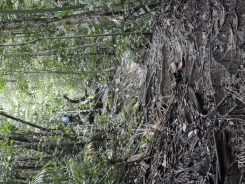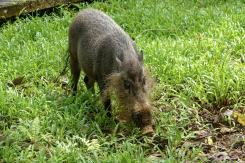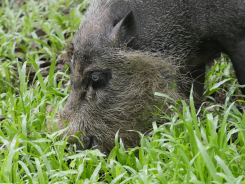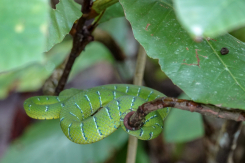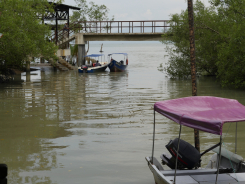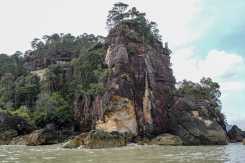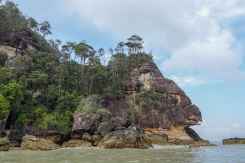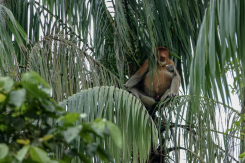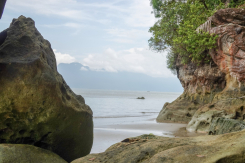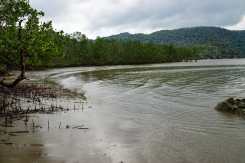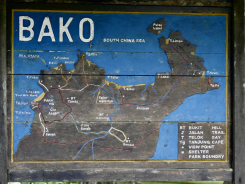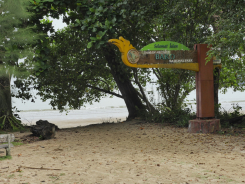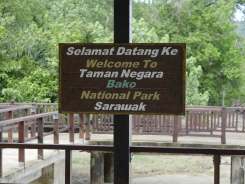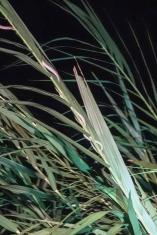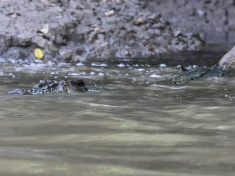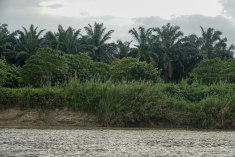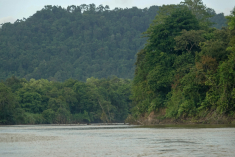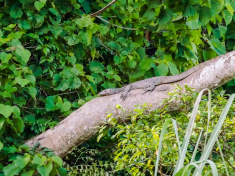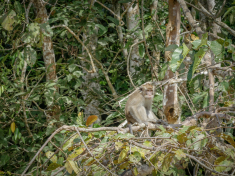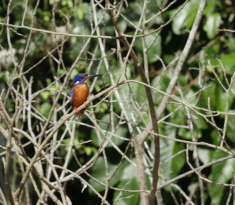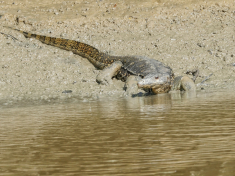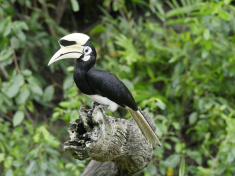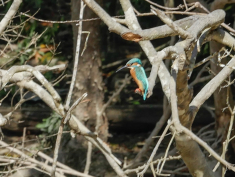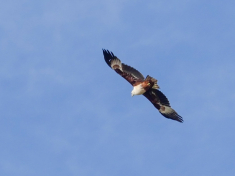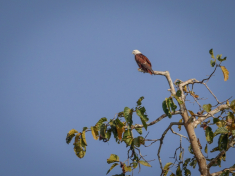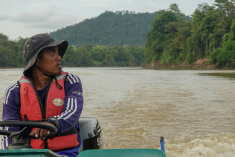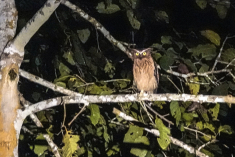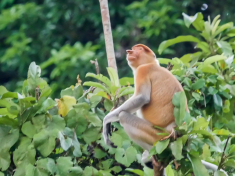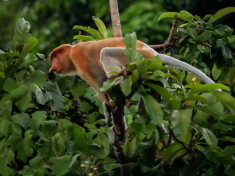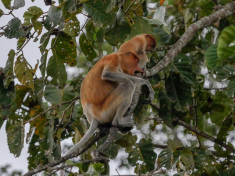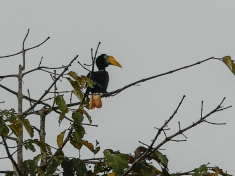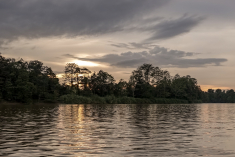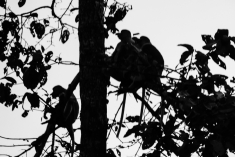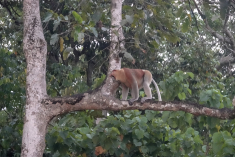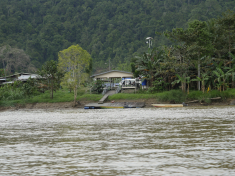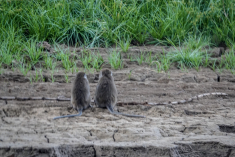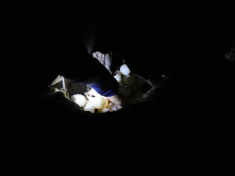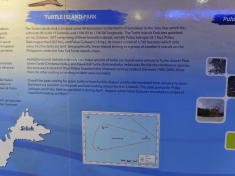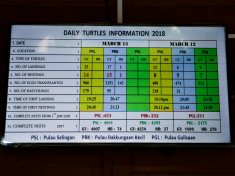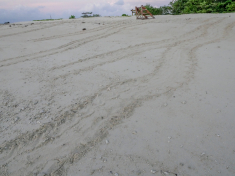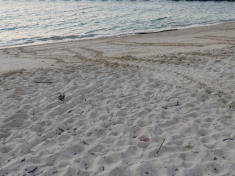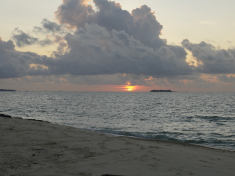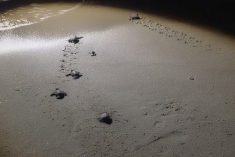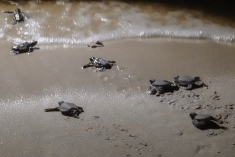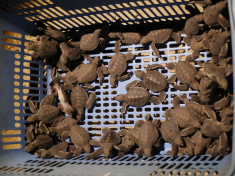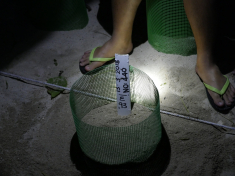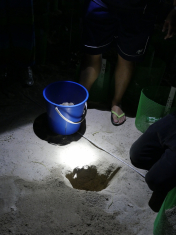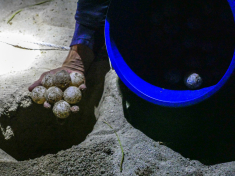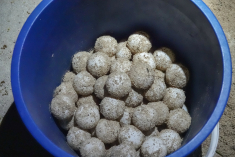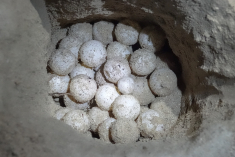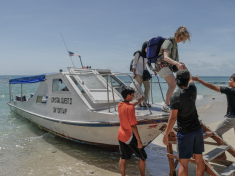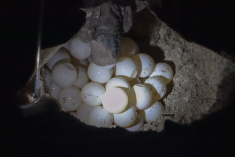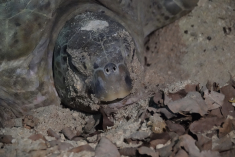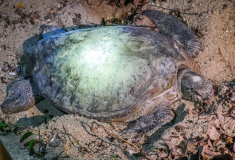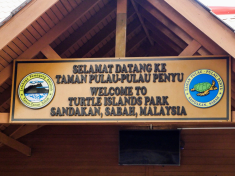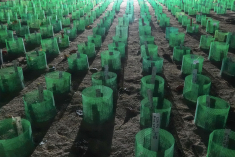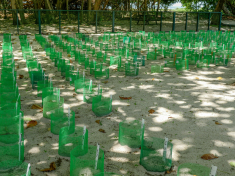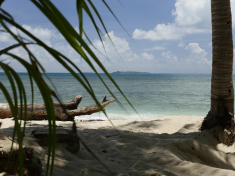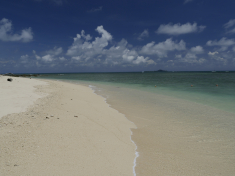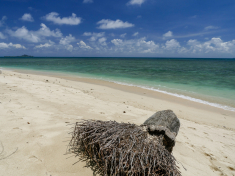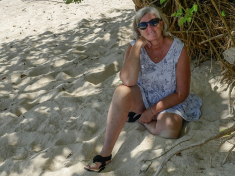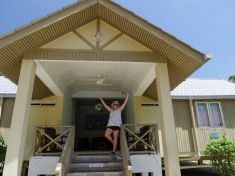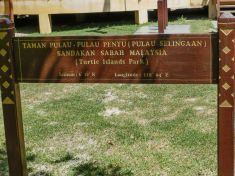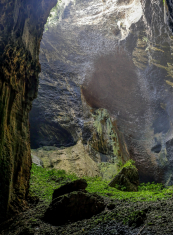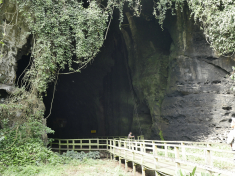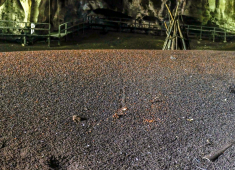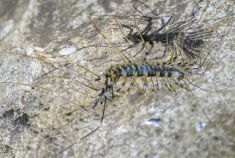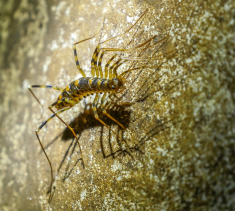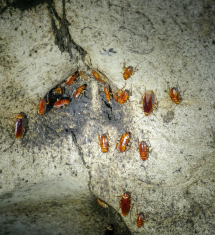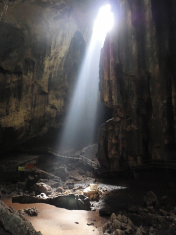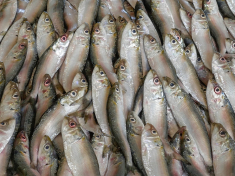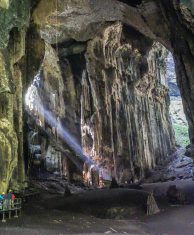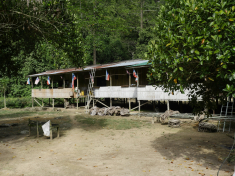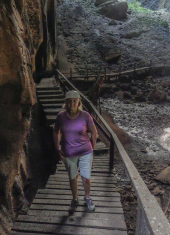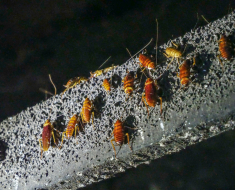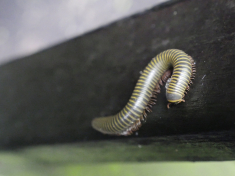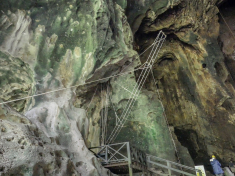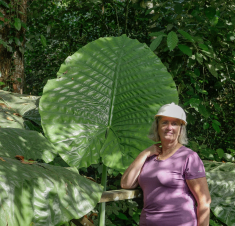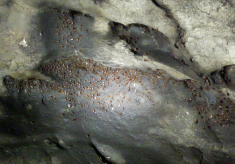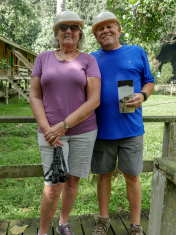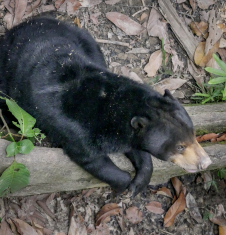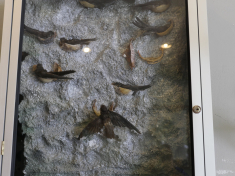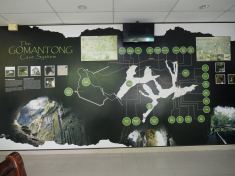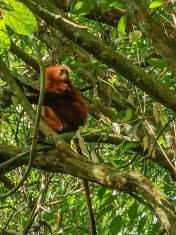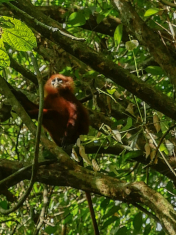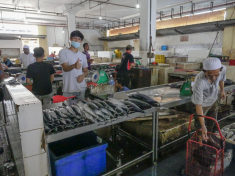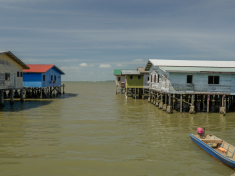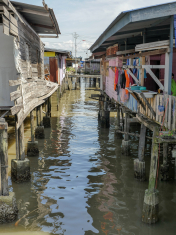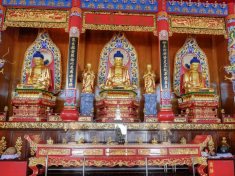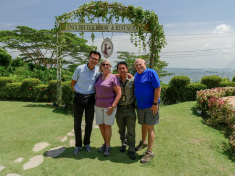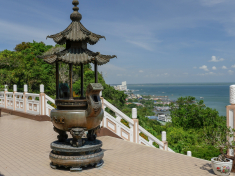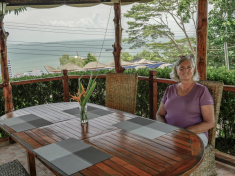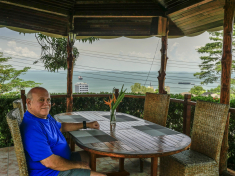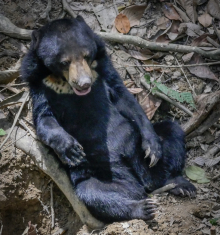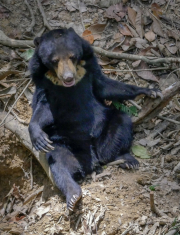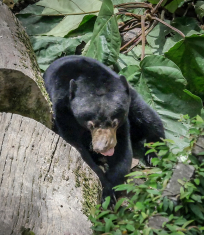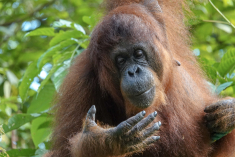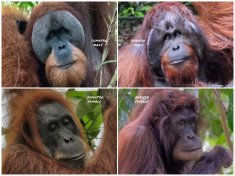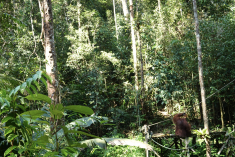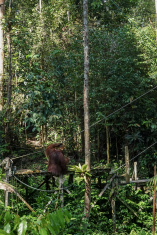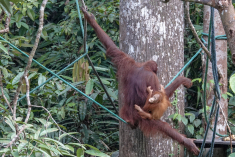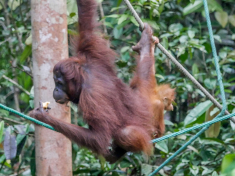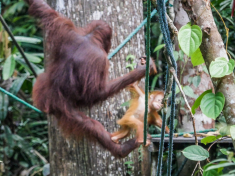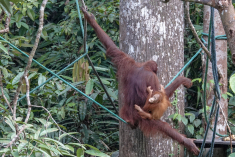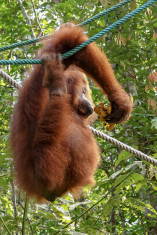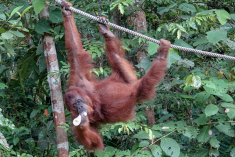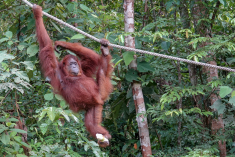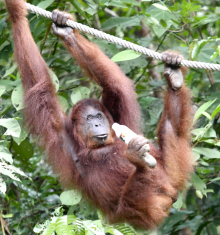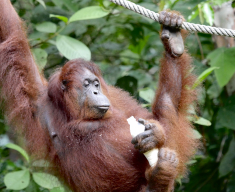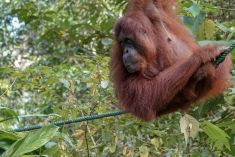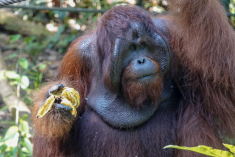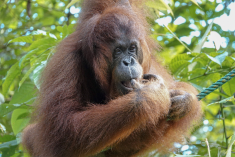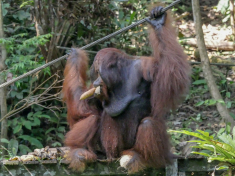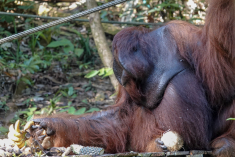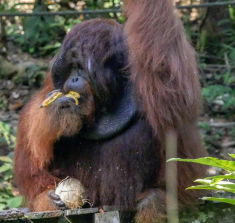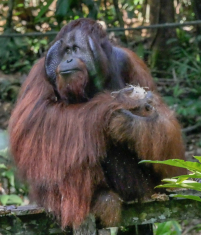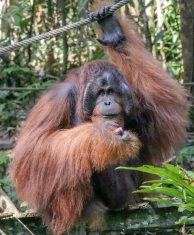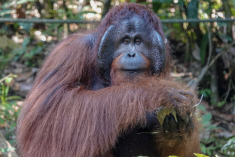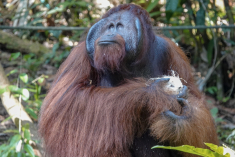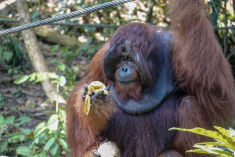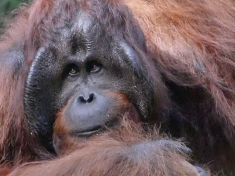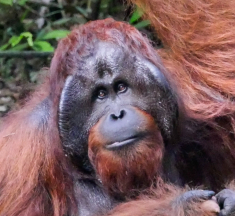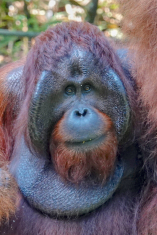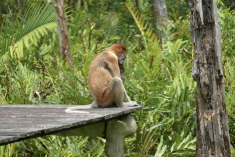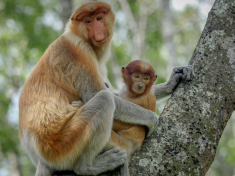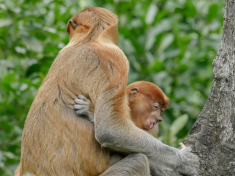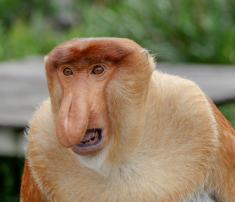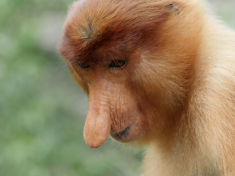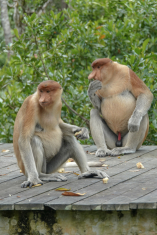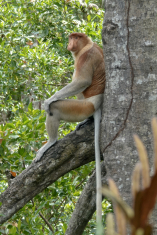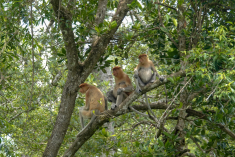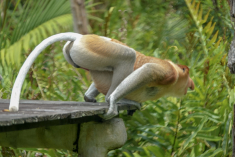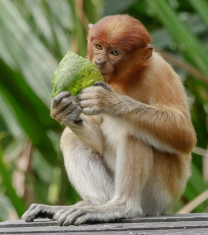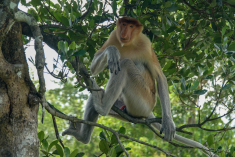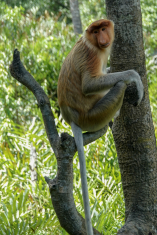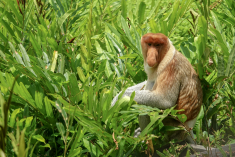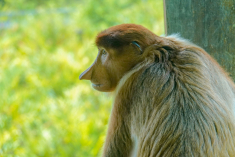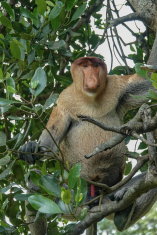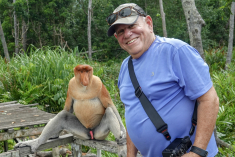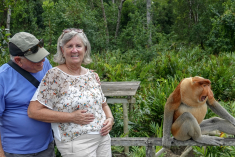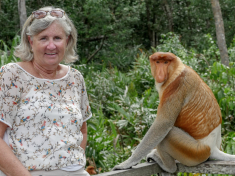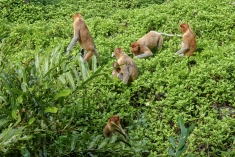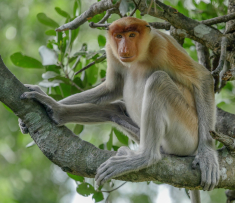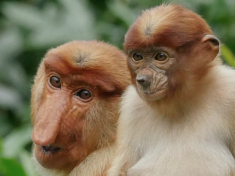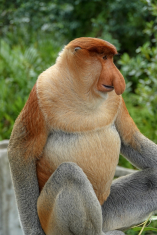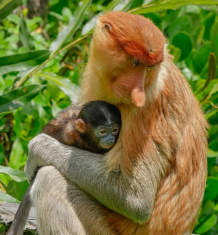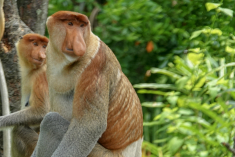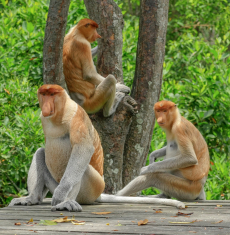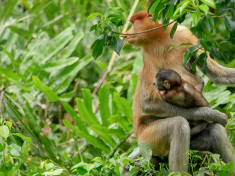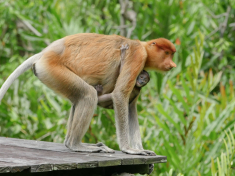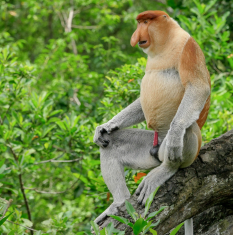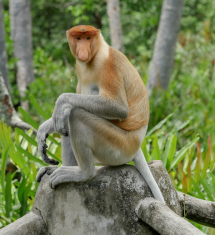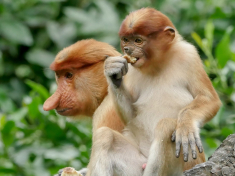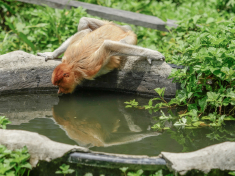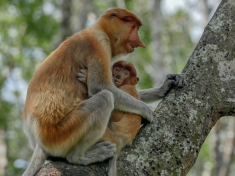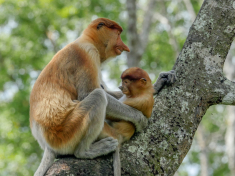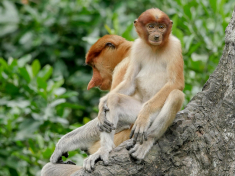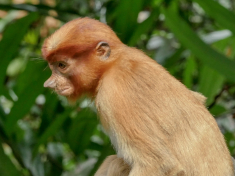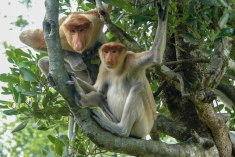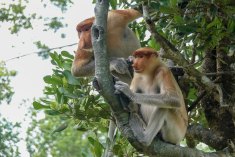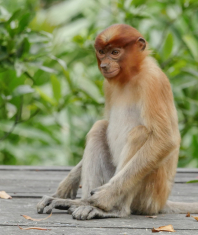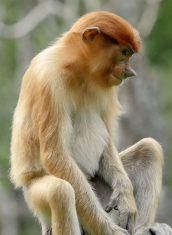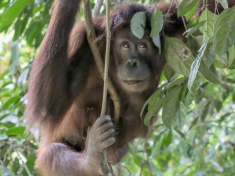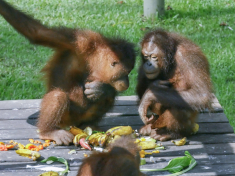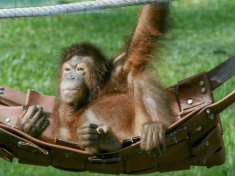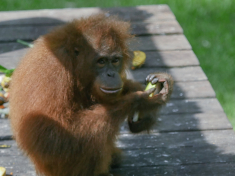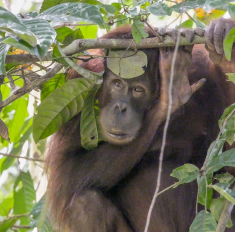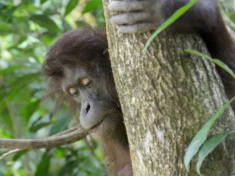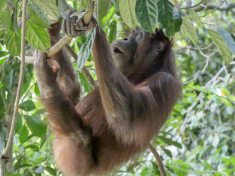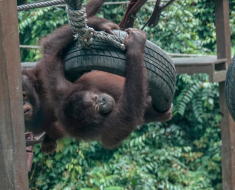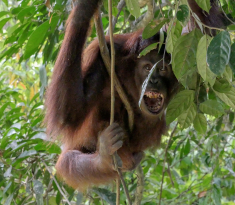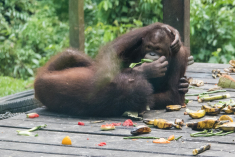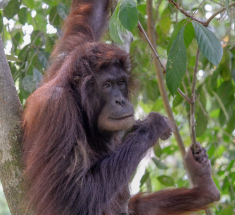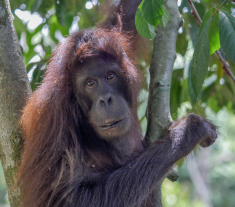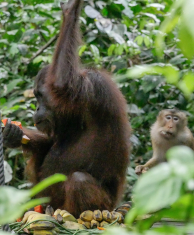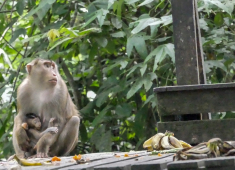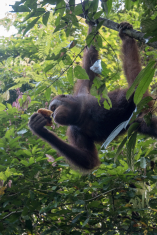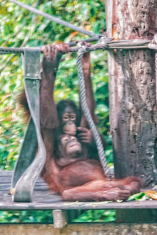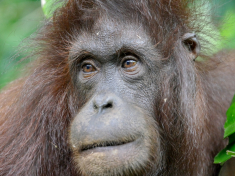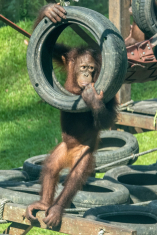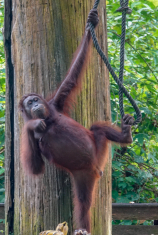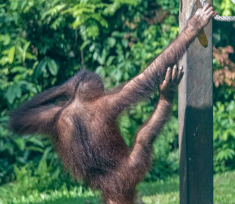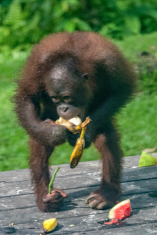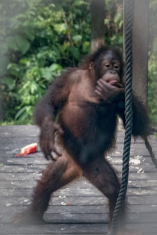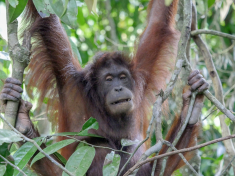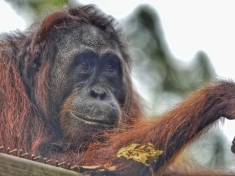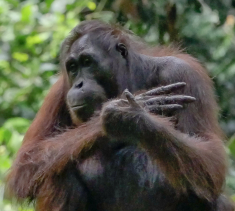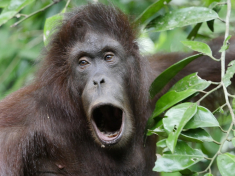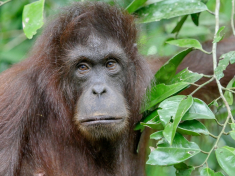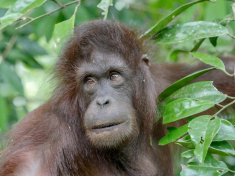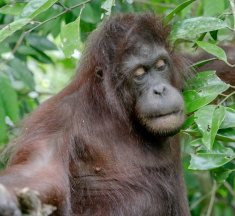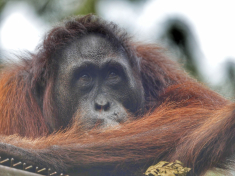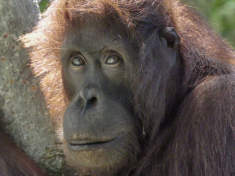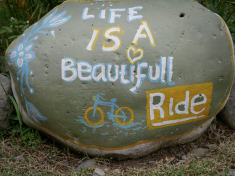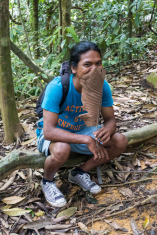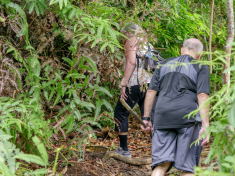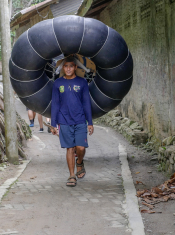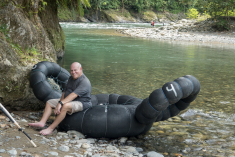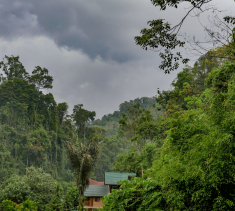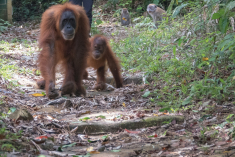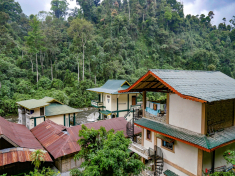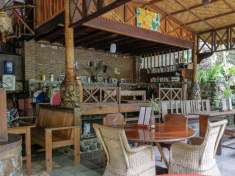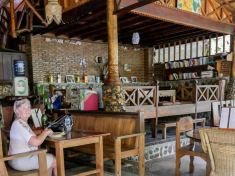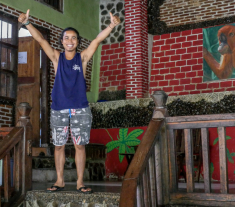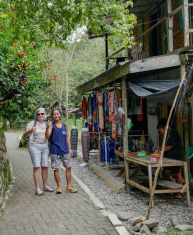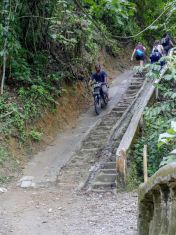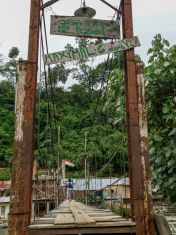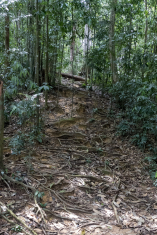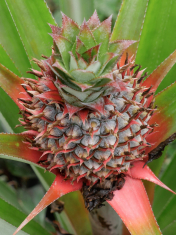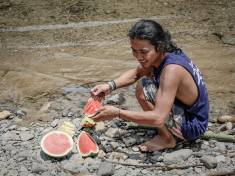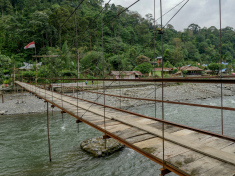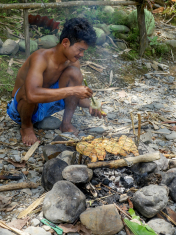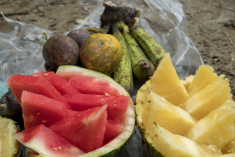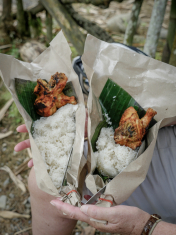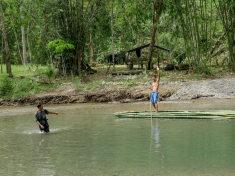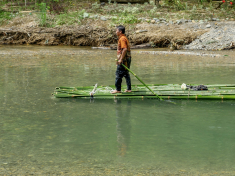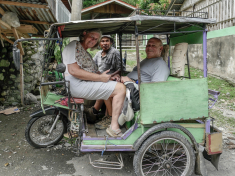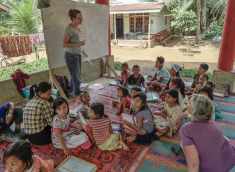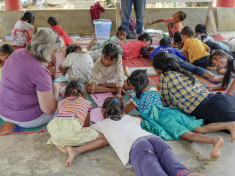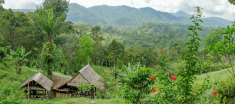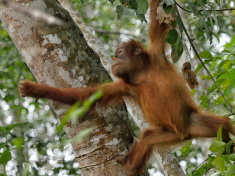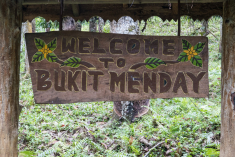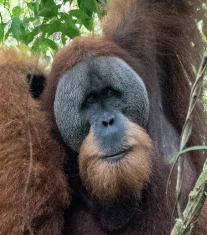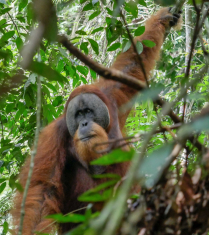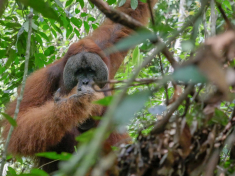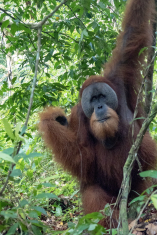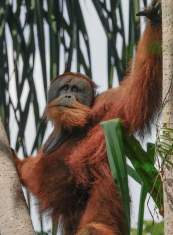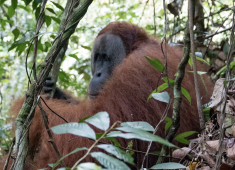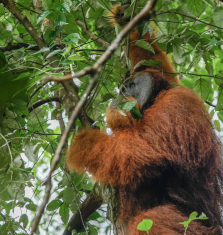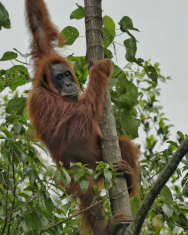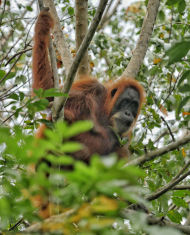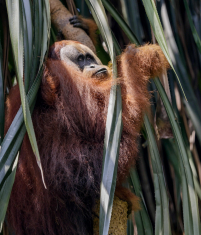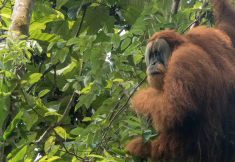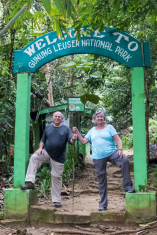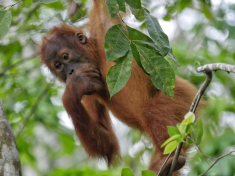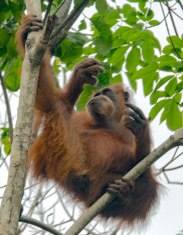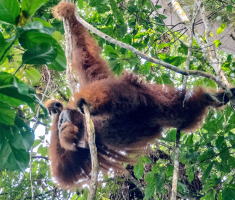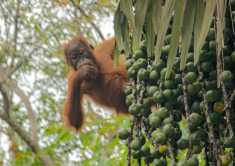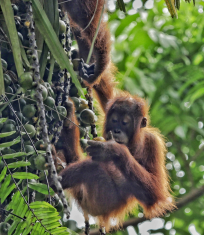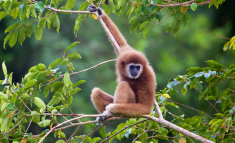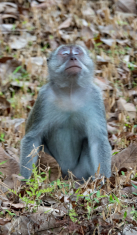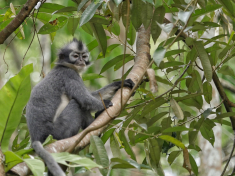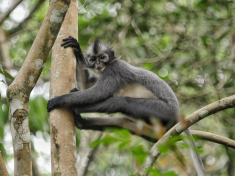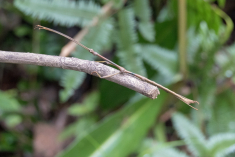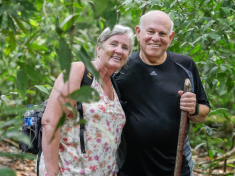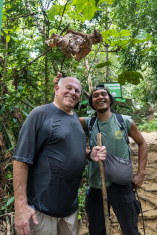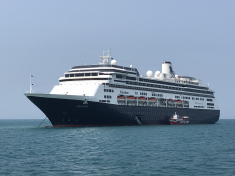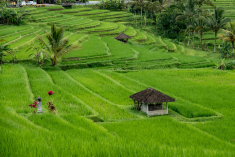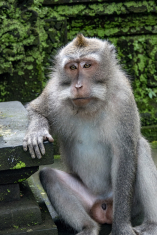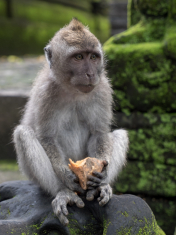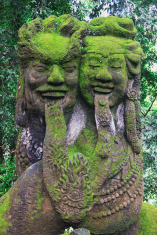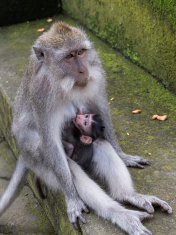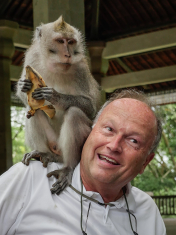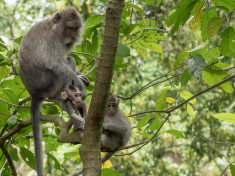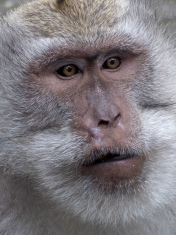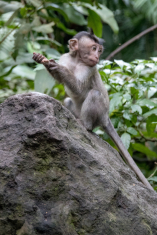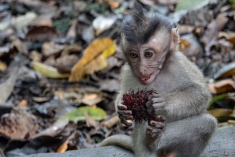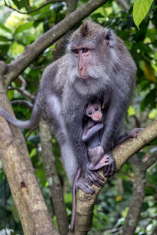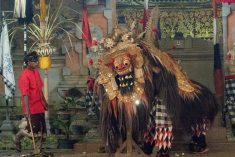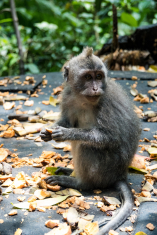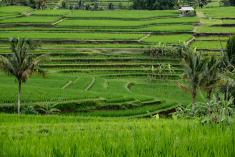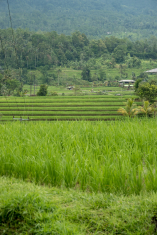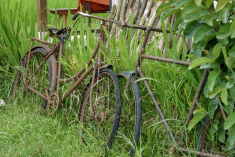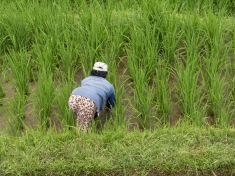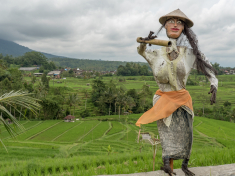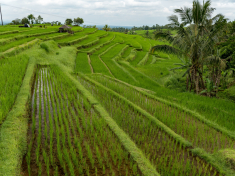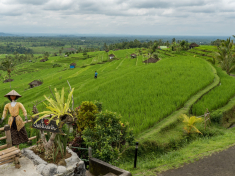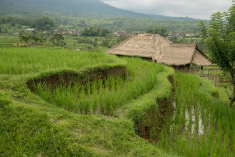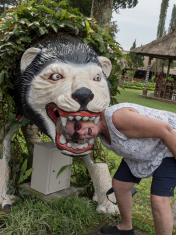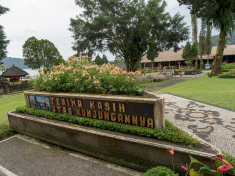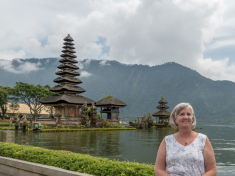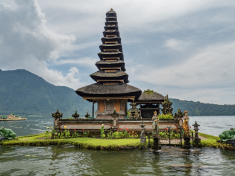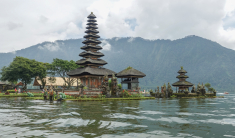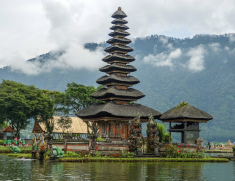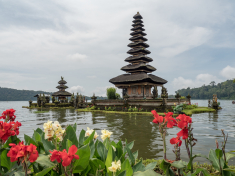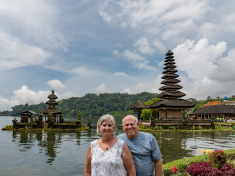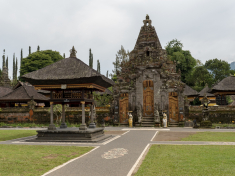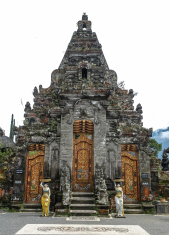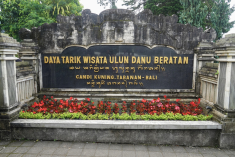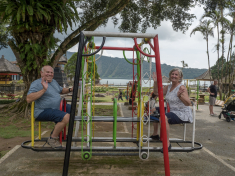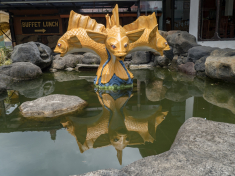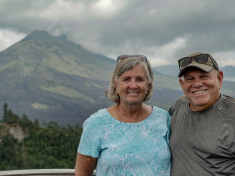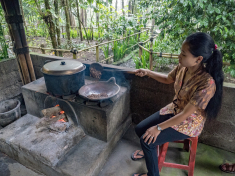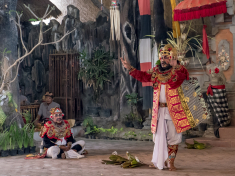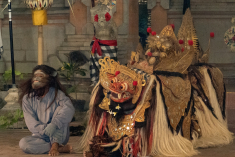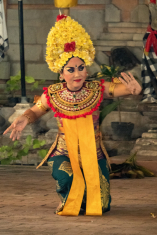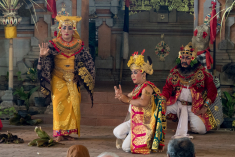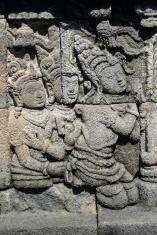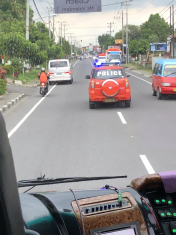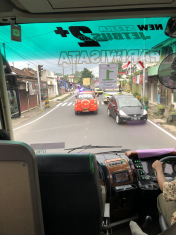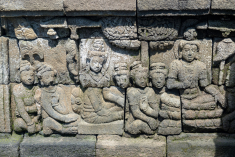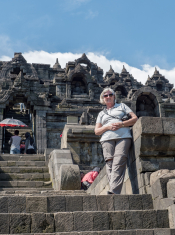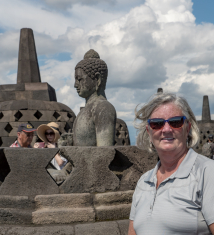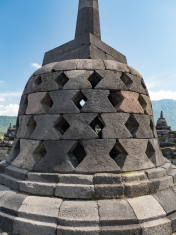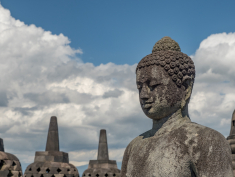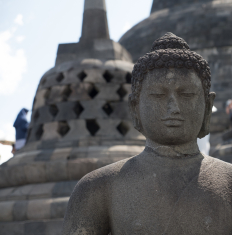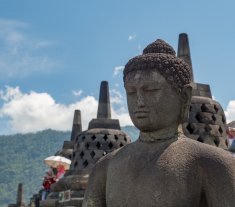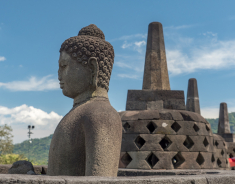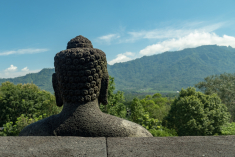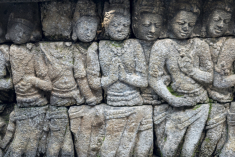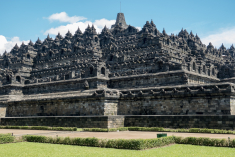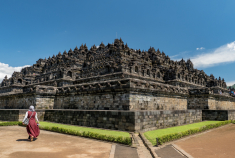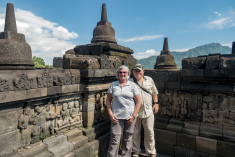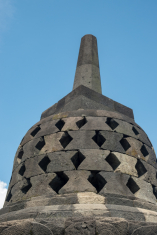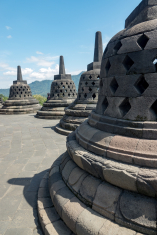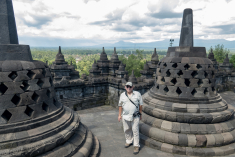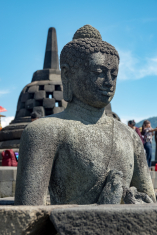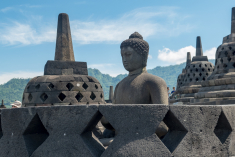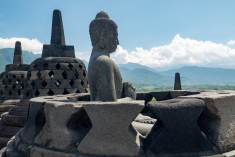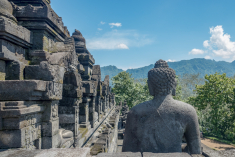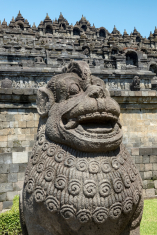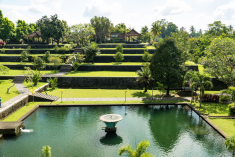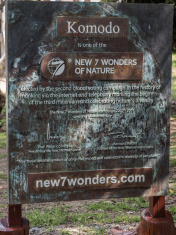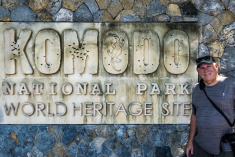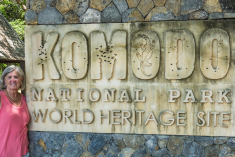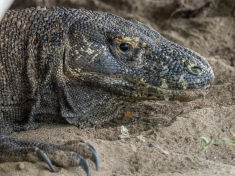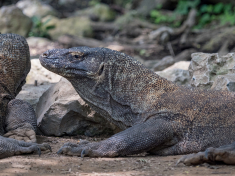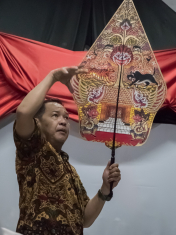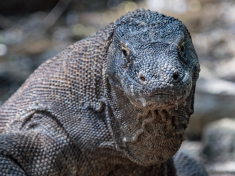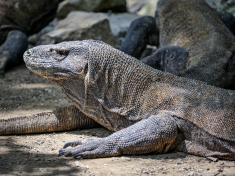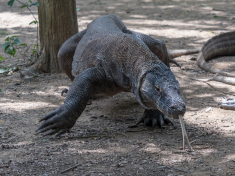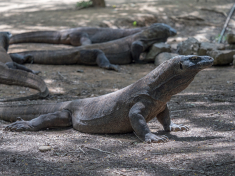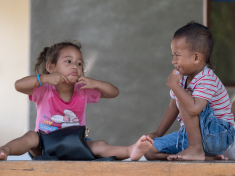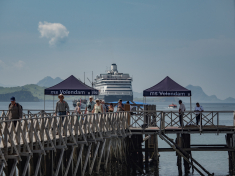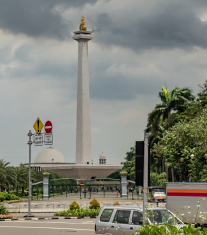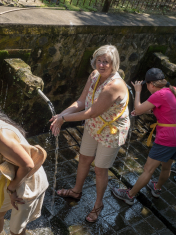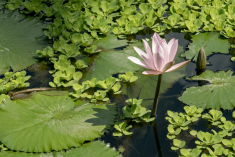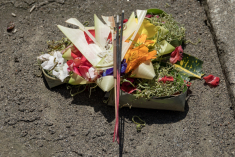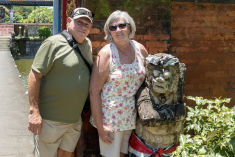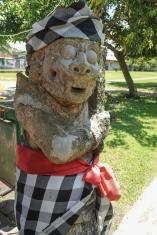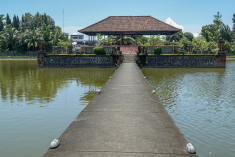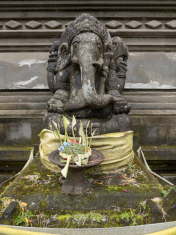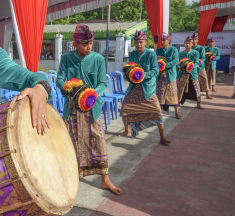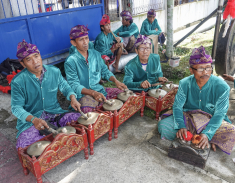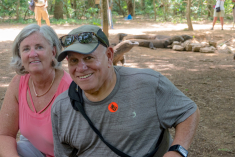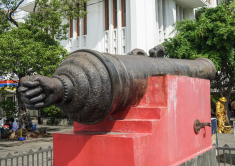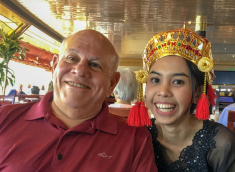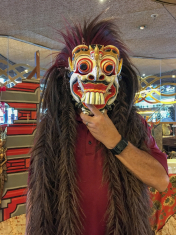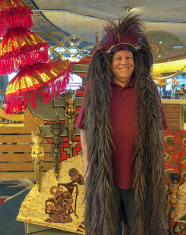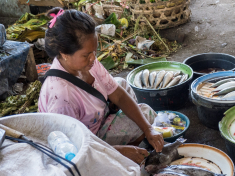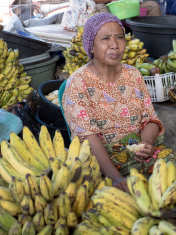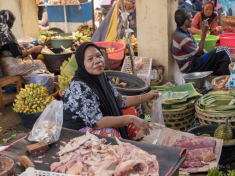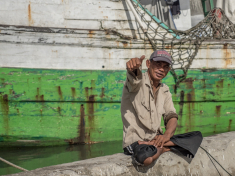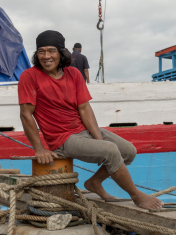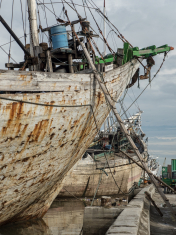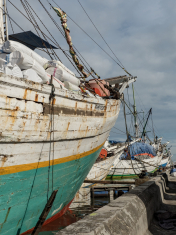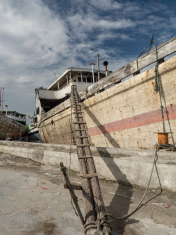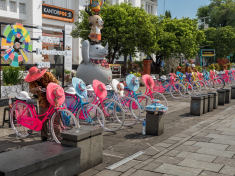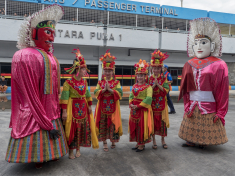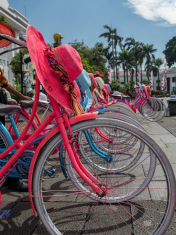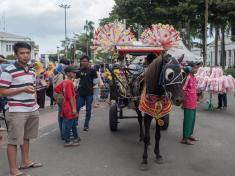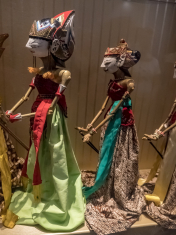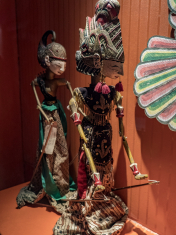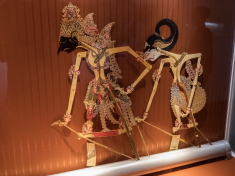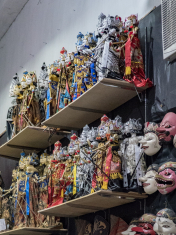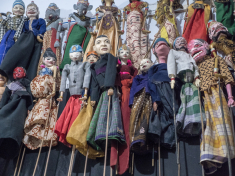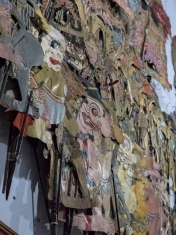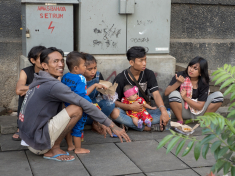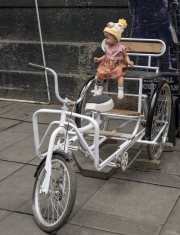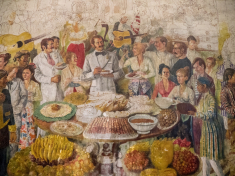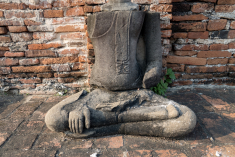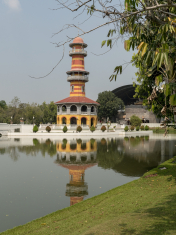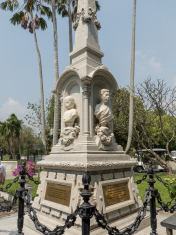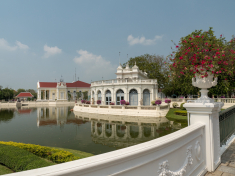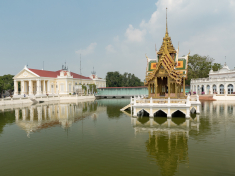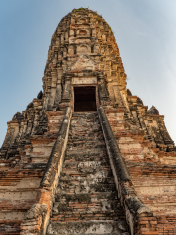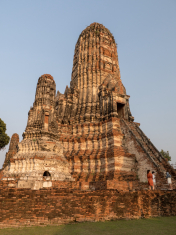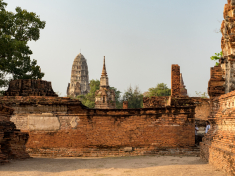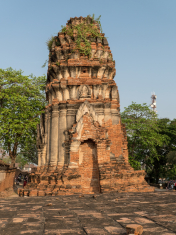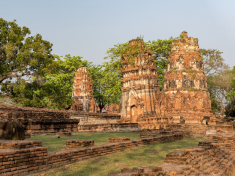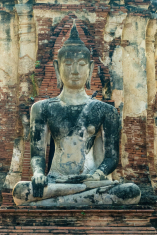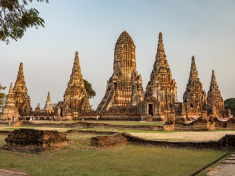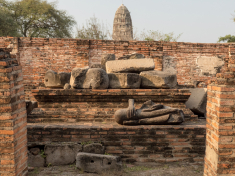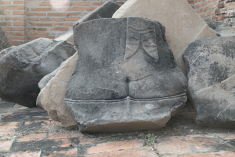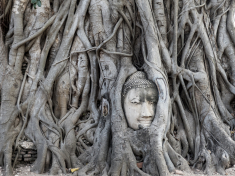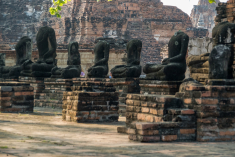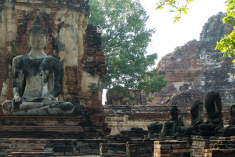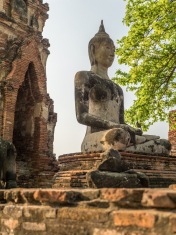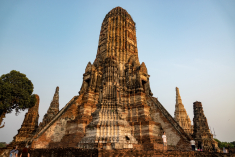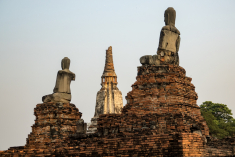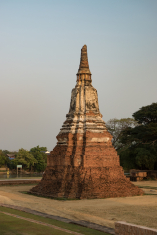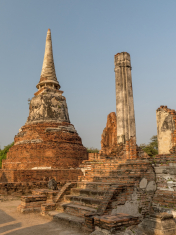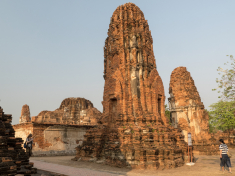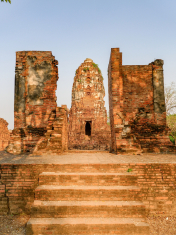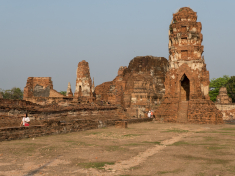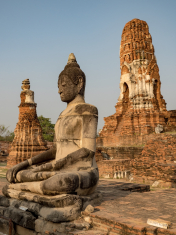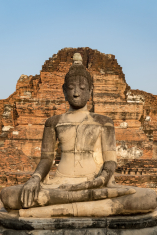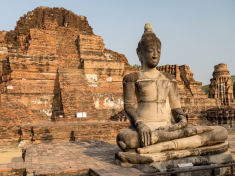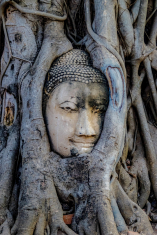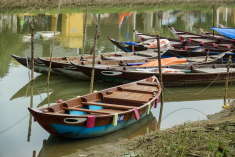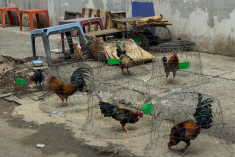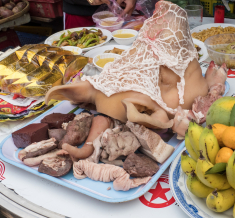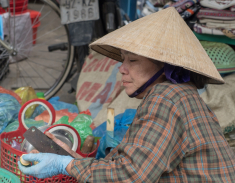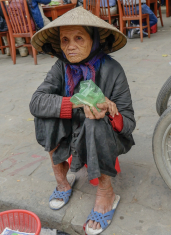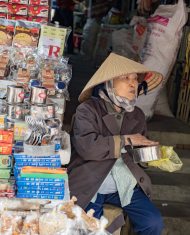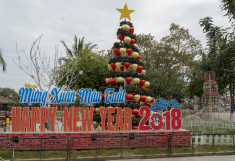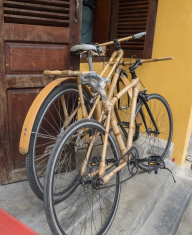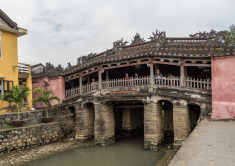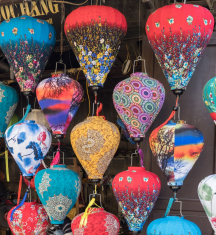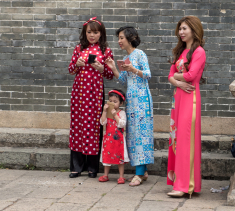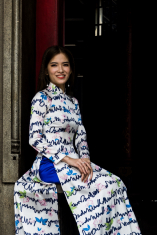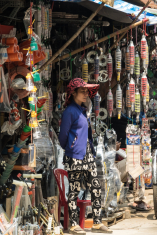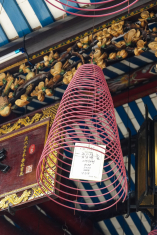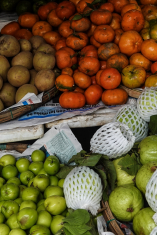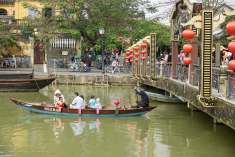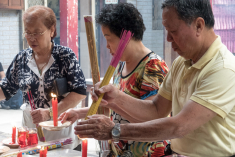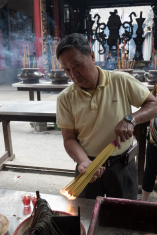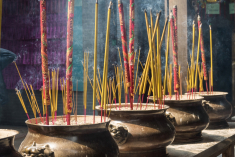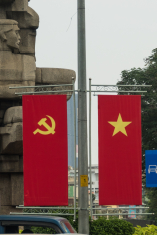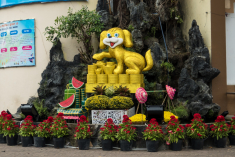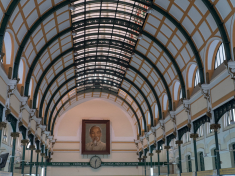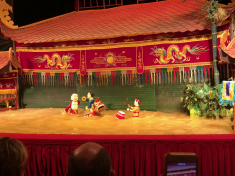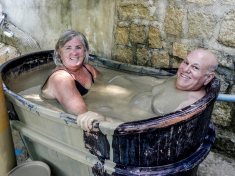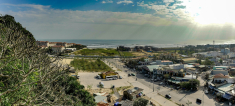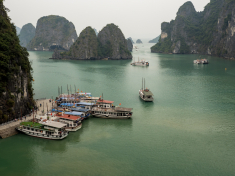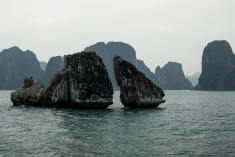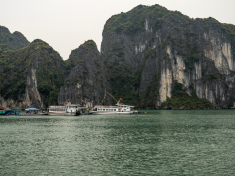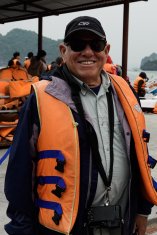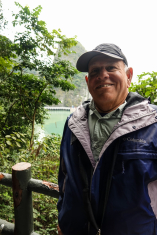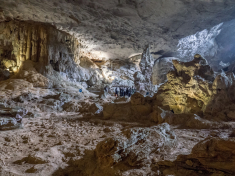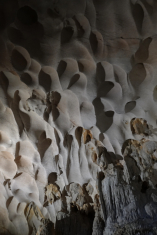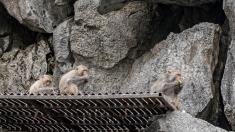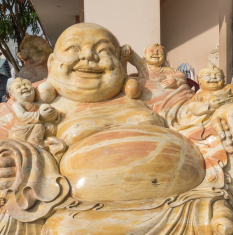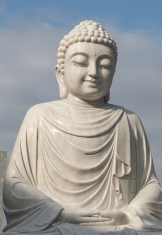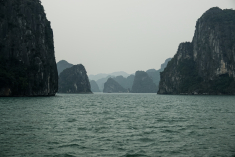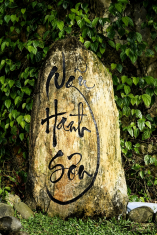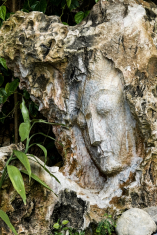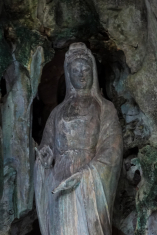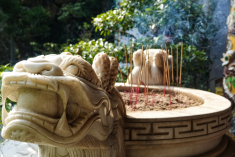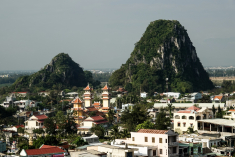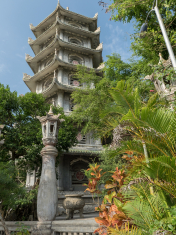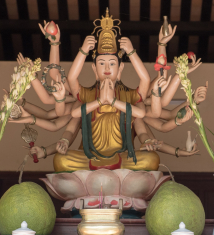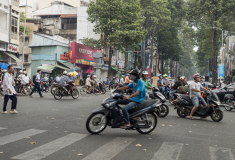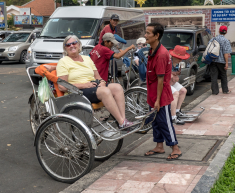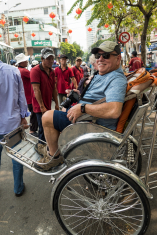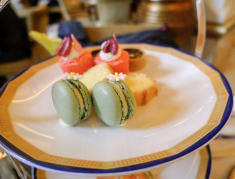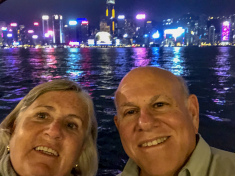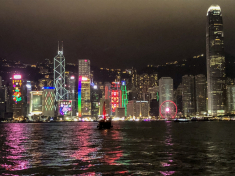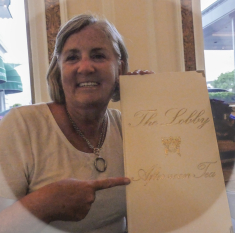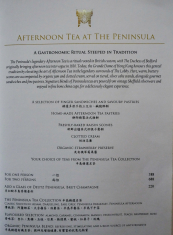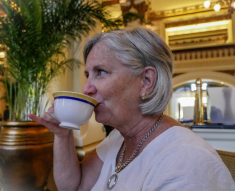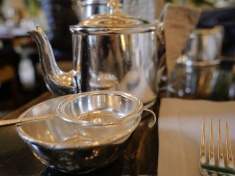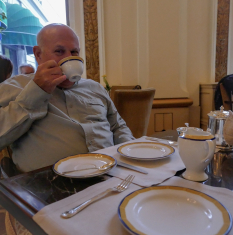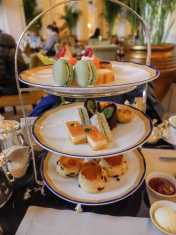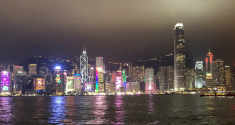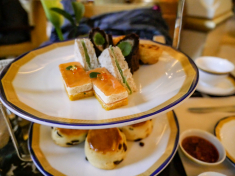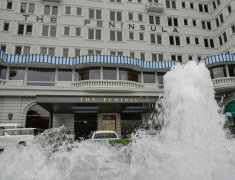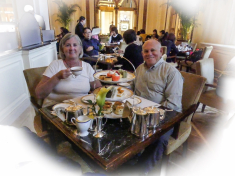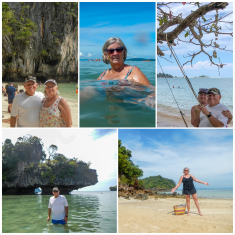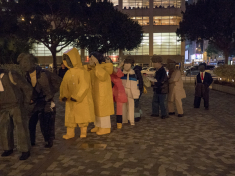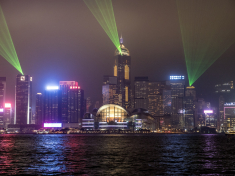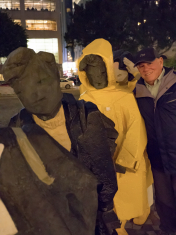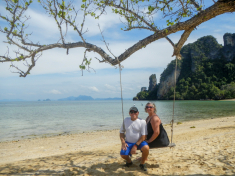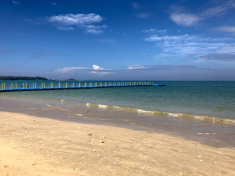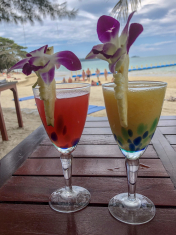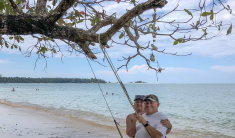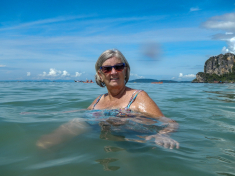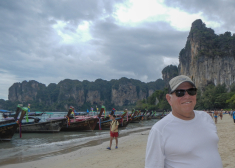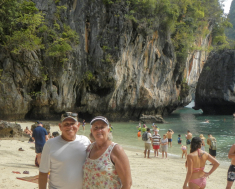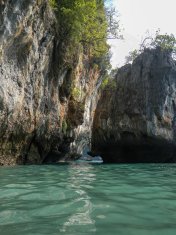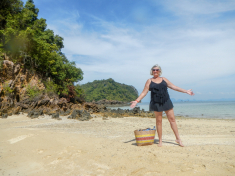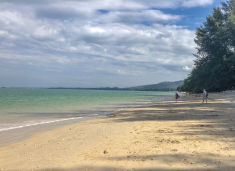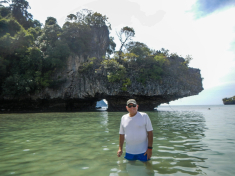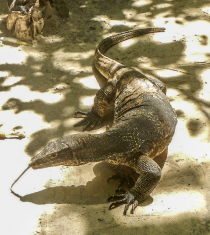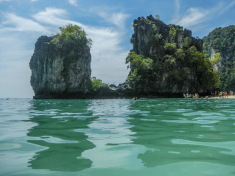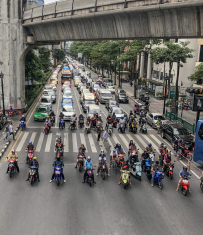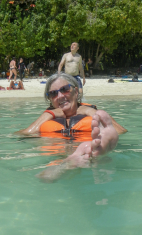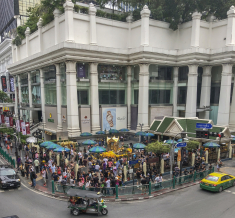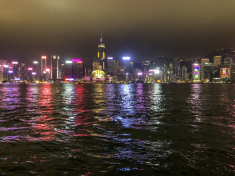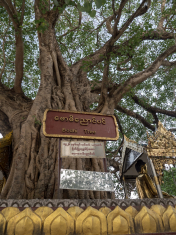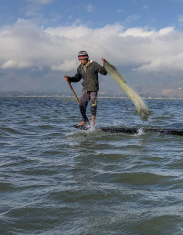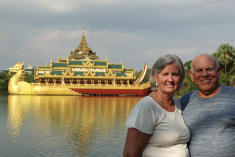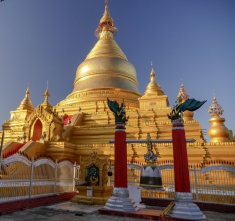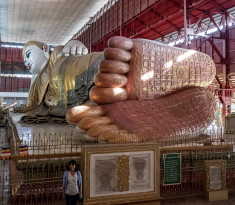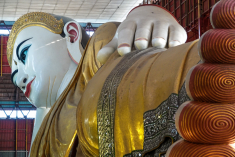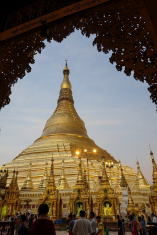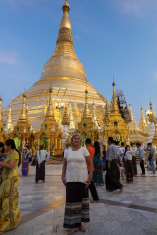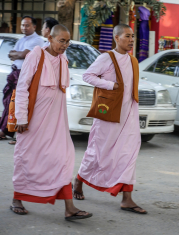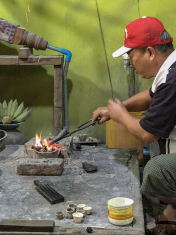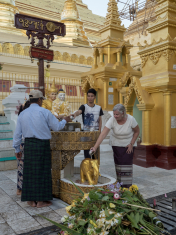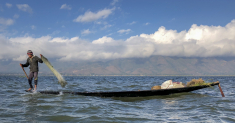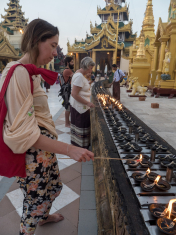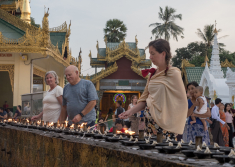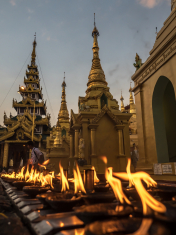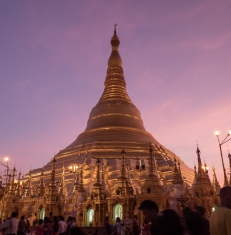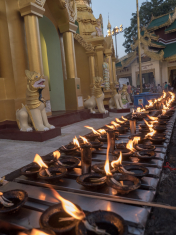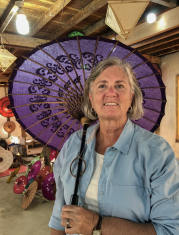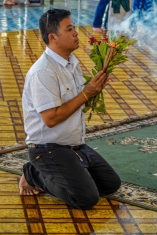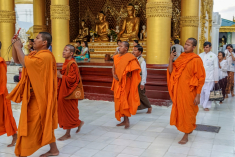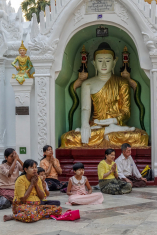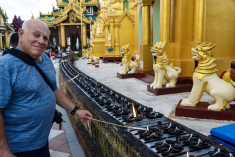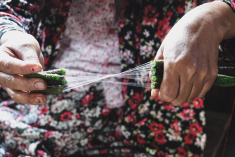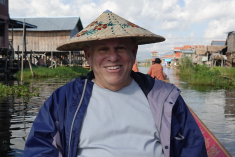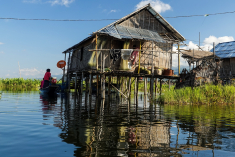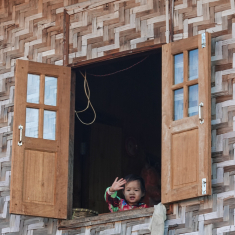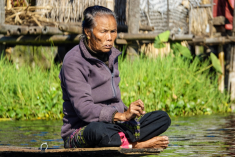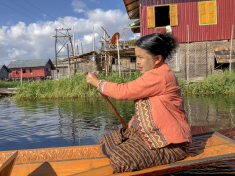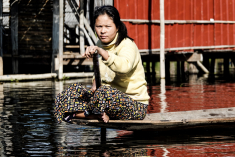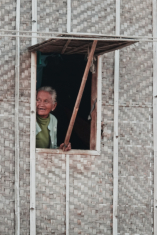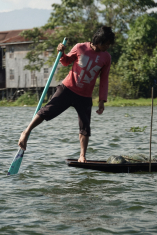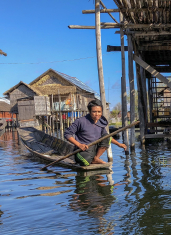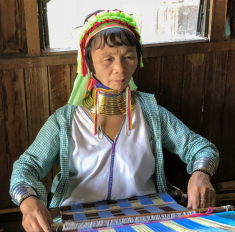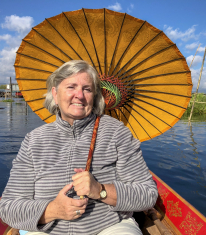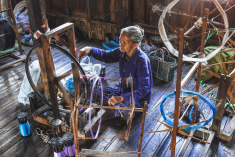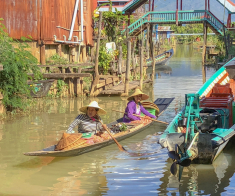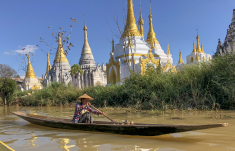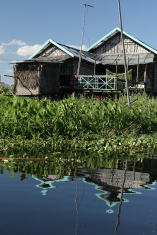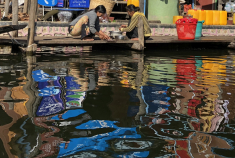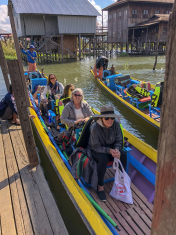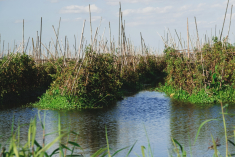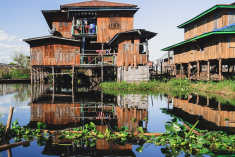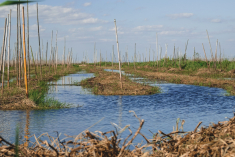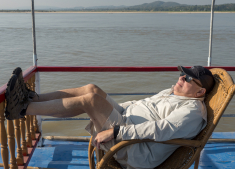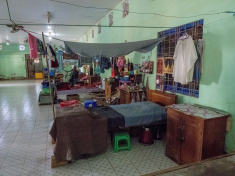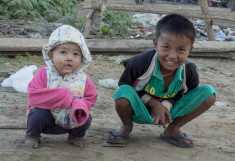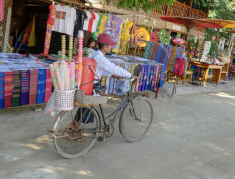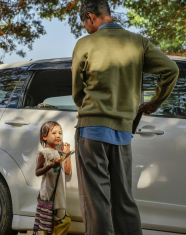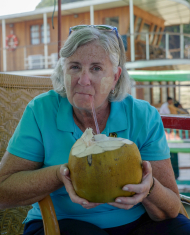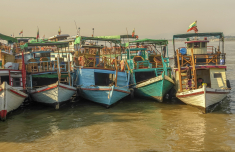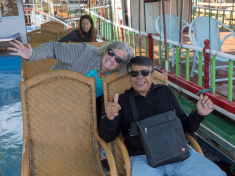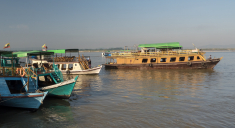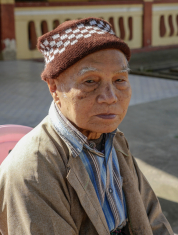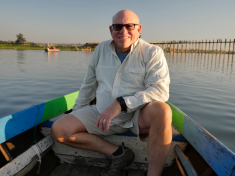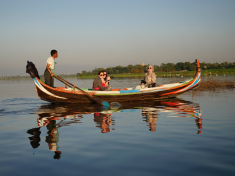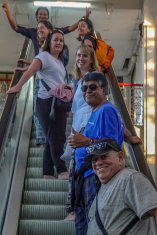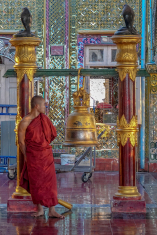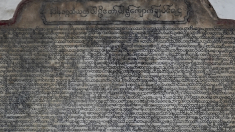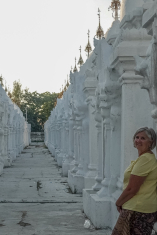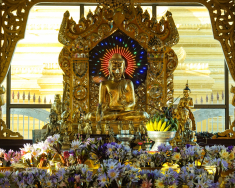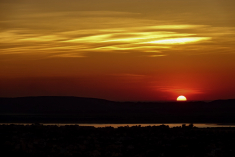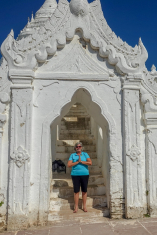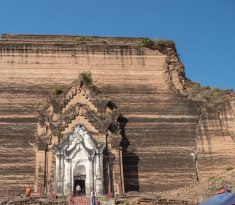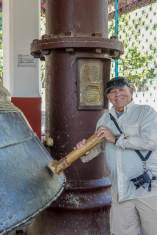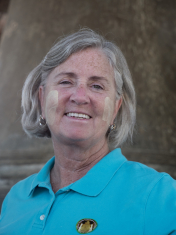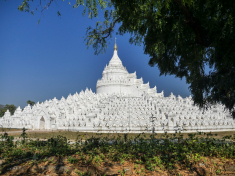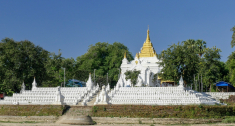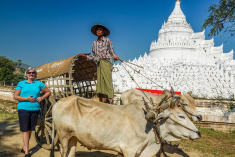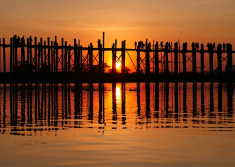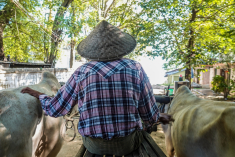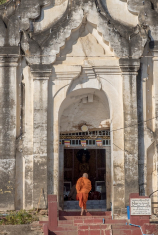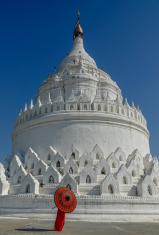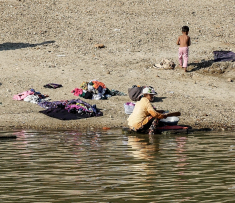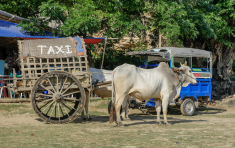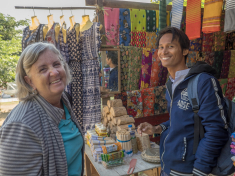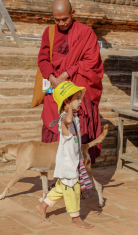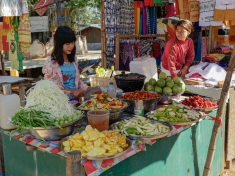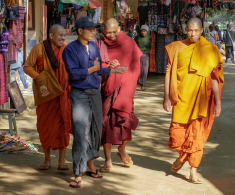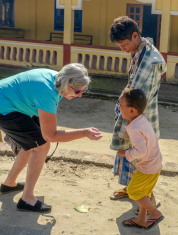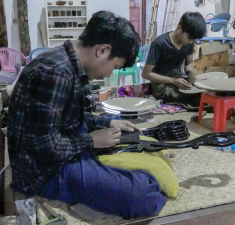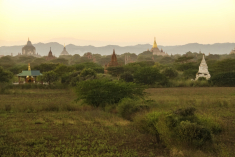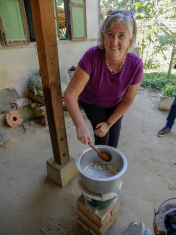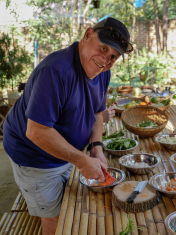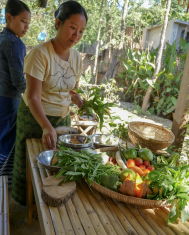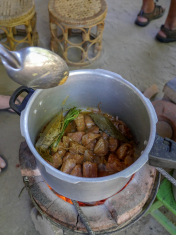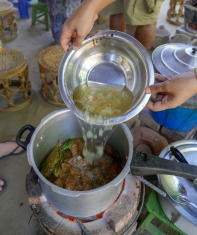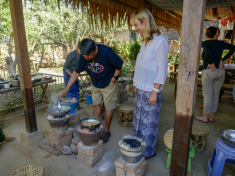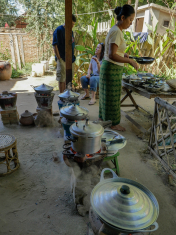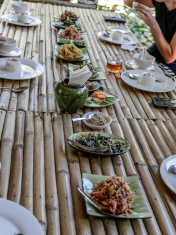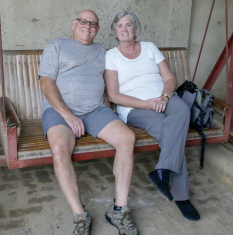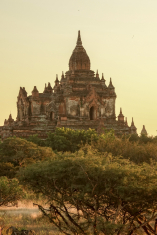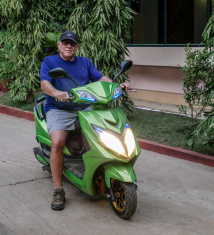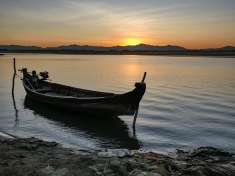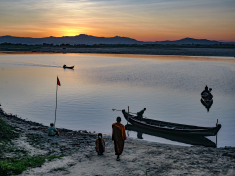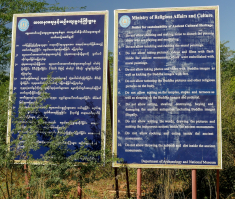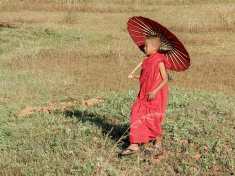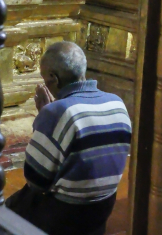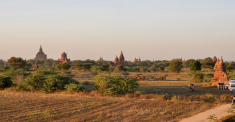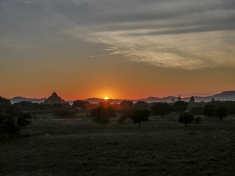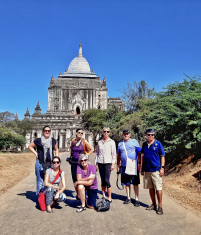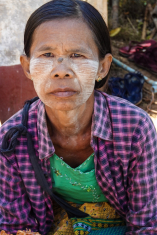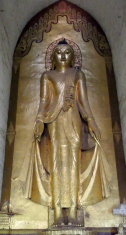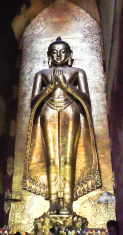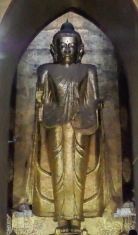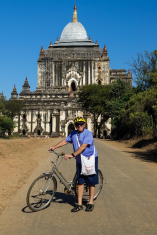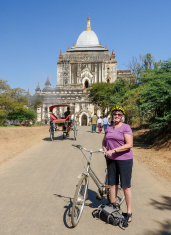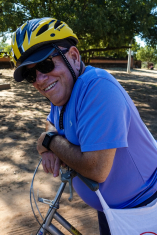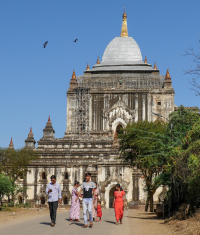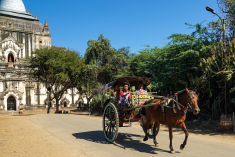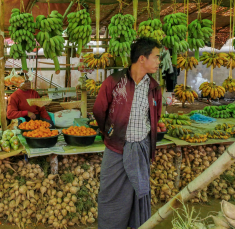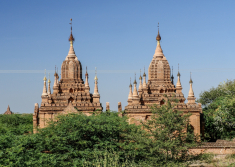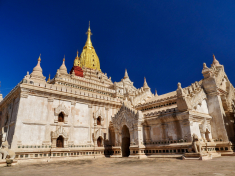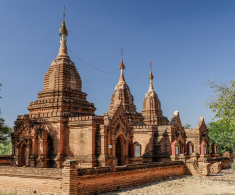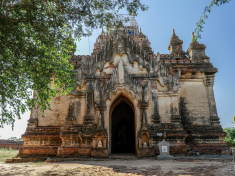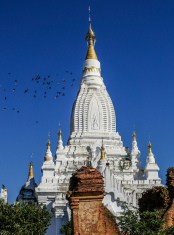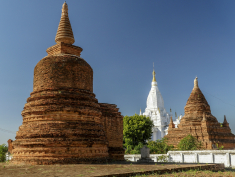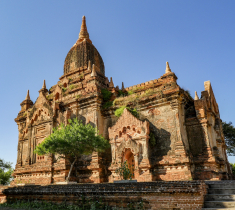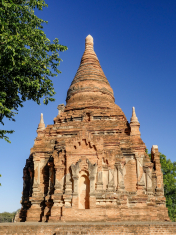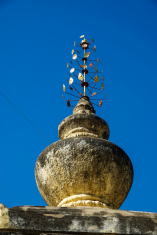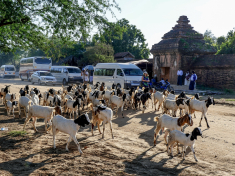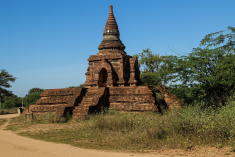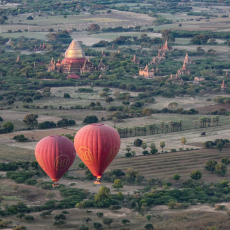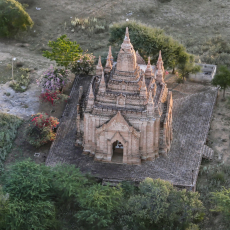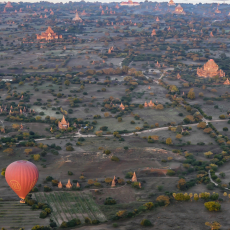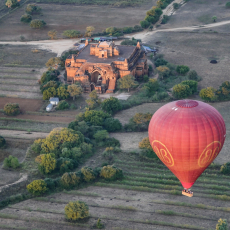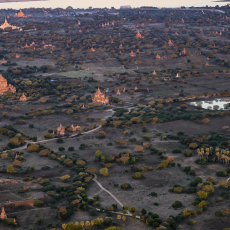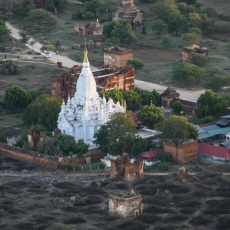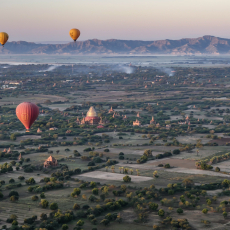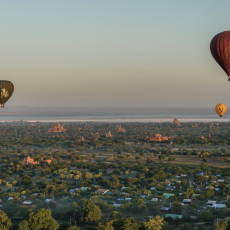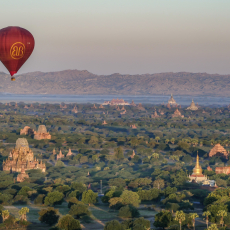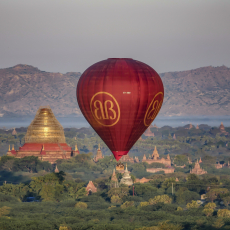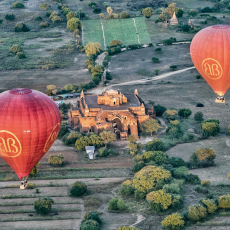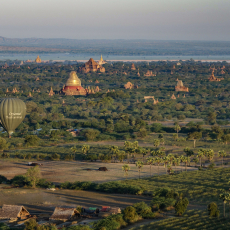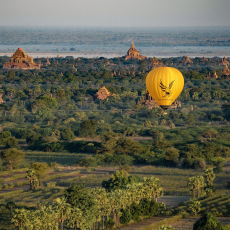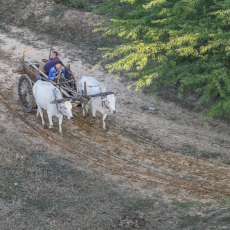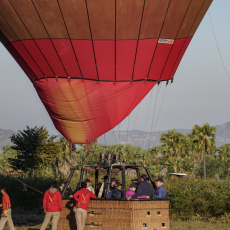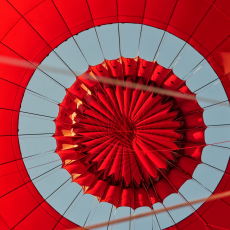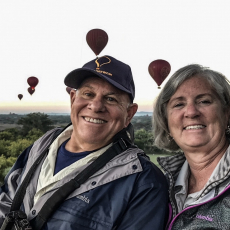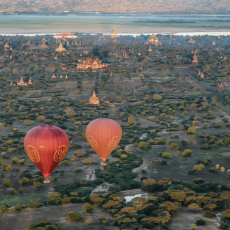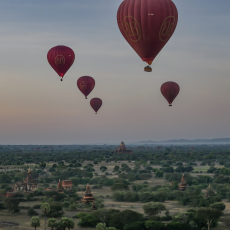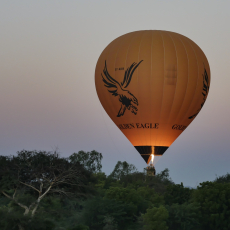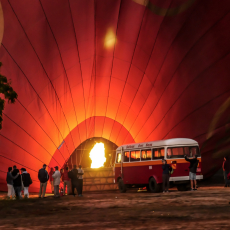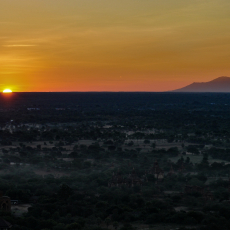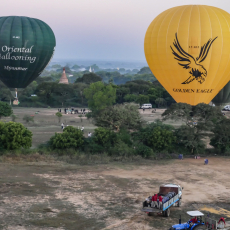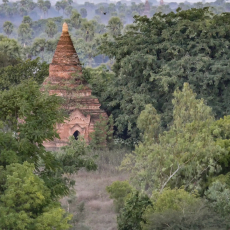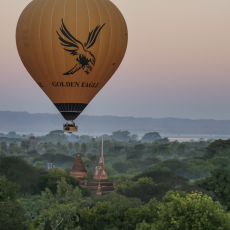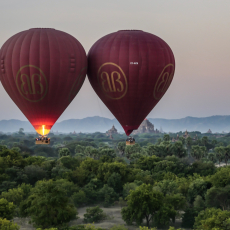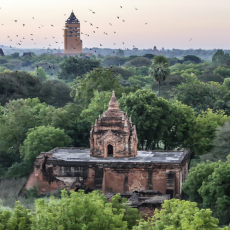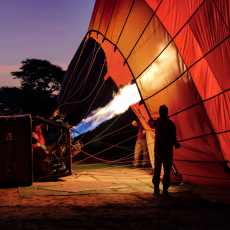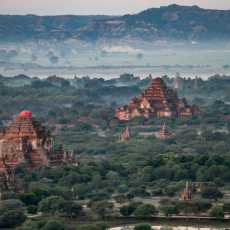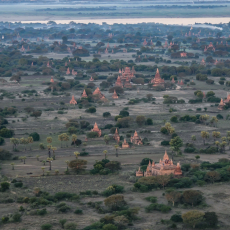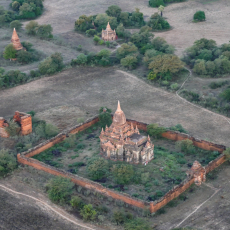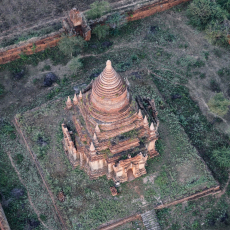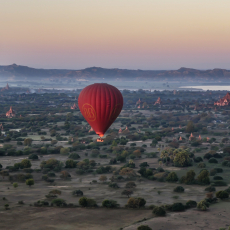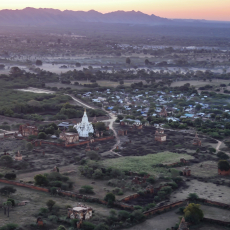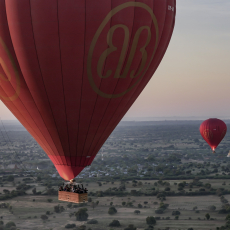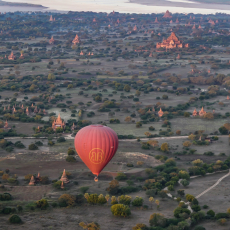This post is a test since we have not updated it for sometime. We are getting ready to start a new journey to Europe.
Category: International Travel
Europe with the whole Family (almost)
One of the mysteries of the universe to me is how does a trip idea spark into reality. I decided, it usually starts with people talking smack. Bantering back and forth, upgrading to one-up-man-ship, general family stuff. Then there is that nanosecond that one person says something meaningful and the concept of “I bet we could do that” appears. A spark! then it is just a logistic puzzle.
Chase, our first graduating grandson had been told many times he could travel when he was older and when he had a destination in mind. At one family gathering, he opined that he would like to see how cars (fast cars of course) were created. That, to him, was a worthy reason to travel. Some internet research showed Maserati, Ferrari, BMW, Porcha had factory tours . . . wow, I bet we could do that; go to Germany and Italy.
The dinner included Jonathan and Janet, who joined the car banter and one-up to join the with a full family destination. We would fly through London or maybe Paris. Houses on Airbnb are reasonable, if we timed it properly, we could leave following Chases’ graduation. A rough budget was concocted, and they said, I bet we can do that. And spark! It was all done except the logistics.
Yes, there were a lot of logistics. The only unbeatable one, however, is the unforeseen cancer diagnosis that David faced and the associated chemotherapy. The doctors, STRENOUSLY, said no travel, no foreign adventures, no – don’t think about it, just no. Janet’s mother, Evelyn, decided to join. We wouldn’t want to waste the senior citizen tickets to all these juicy destinations.
We opted for a house just outside Paris. It did require a 30-minute commute into the city each day, but it also allowed us to get to know a small town, the French bakery on the corner, the pizza place by the train station and many trips to the grocery store for our daily provisions. Our first day we started with a Seine River Cruise to get the view of the whole city and we had our first of many crepes. Paris is, after all, one of the most appealing, glamorous, and romantic of all the cities. The Eiffel Tower was a must; the view from the top is spectacular. The Eiffel Tower at night is another must because of the golden light. Our mistake was that we forgot to notice the train stopped running at 11, and it was a long taxi ride home.
The Arc De Triomphe, Versailles, the d’Orsay, Moulin Rouge and Palace of Versailles are some of Paris’ other famous landmarks. Paris is loaded with interesting and attractive sights. Paris, France: truly a memorable experience.
The Chunnel to London, the Eurostar high speed train, is certainly speedy; the journey took 2 and a half hours.
Every city has some history. London possesses more than 2,000 years but yet it is totally modern. Walking down the street brings you face to face with icons: the Thames, landmarks like Big Ben, theTower of London, and St Paul’s Cathedral.
There are the distinctive cabs, shopping at Harrods (Versace), enjoying high tea in Notting Hill. A day trip to Windsor to watch the changing of the guard and the best of all Trooping of the Colors (the Queen’s birthday) at Buckingham Palace.
London has the best theatre scene in the world, we saw The Lion King at the West End the first professional theatre event for the grandkids! What a place for your first experience.
But this trip began with need for speed and fast cars. Stuttgart, Munich and Marella, Italy are home to some of the best car companies in the world. Car production lines have two components: the body assembly and the power train assembly. Eventually “they marry” and voila you have a car. Each company does things different, some consolidate the clients’ accessory choices in a moveable rack that accompanies the car through the assembly process, they have various automation or robotic technology Lamborghini makes their entire care by hand. All had a museum highlighting the history of the company and their classic cars. And every single day, Chase smiled more than I have ever seen. A spark! I’m so glad we did that.
Amazing Borneo
What were we thinking when we were planning the nearly 4 week trip to Malaysia’s Borneo? Borneo is the third largest island in the world. The island is politically divided among three countries: Malaysia and Brunei in the north, and Indonesia to the south. Approximately 73% of the island is Indonesian territory. In the north, the East Malaysian states of Sabah and Sarawak make up about 26% of the island.
We spent a one week in the state of Sabah, town of Sandakan and nearby rainforest and islands, and a week in the state of Sarawak, town of Kuching. Our flight connections were through the town of Kota Kinabalu (KK). We stayed in KK twice, each time for nearly a week, once in downtown KK and one stay at a beach resort. The first weekend at KK, we purchased VIP tickets for the Kota Kinabalu Jazz Festival (KKJF), an annual fund raising jazz extravaganza jointly organized by the Rotary Club of Kota Kinabalu (RCKK) and the Society of Performing Arts Kota Kinabalu Sabah. We enjoyed the amazing concert and wine. We will always remember KK and it’s refreshing, chilled wine!
In KK we ate at Welcome Seafood, you choose from fresh seafood from tanks, cooked to you specifications and delivered to your table with steamed rice and fresh vegetables. We visited a KK shopping mall where we viewed a tribal dance. During the stay at the beach resort enjoyed happy hour each evening with a few beers and great music and took a sunset cruise to view amazing sunset. We enjoyed beach time and snorkeling at close by islands.
The animal life is amazing, but don’t discount the plants on Borneo. The world’s largest flower, Rafflesia Arnoldo, is found exclusively on Sumatra and Borneo. It takes 6-8 YEARS for the transition from seed to a cabbage size bud. When it blooms, it has 5 days of perfect before it begins rotting. Weighing in at 11 kg, its known as the “corpse” flower after the distinctive aroma of rotting meat it emits to attract pollinating insects. The flower has no stems, leaves or roots. It is a parasite living on the host vine. The lifecycle of the flowers are identified by their “day”. We saw 3 flowers: in their day 5, 6, and 7. Perfect, starting to rot and in full decline.
At sunrise, we depart Kota Kinabalu for Kinabalu National Park and Poring Hot Springs, a 130 kilometer journey by car to explore the highland rainforests that nestled beneath Mt Kinabalu which tops out at 4,095 meters. By lunch time Karen was traipsing across a canopy walkway with colorful butterflies fluttering around her, some 30 meters above the forest floor. David opted to pass — he is afraid of heights. Karen paused to catch her breath – a very deep one at that, as she soaked in the magnificence of Kinabalu National Park, Malaysia’s first UNESCO World Heritage Site.
Another stop was at the Mount Kinabalu botanical garden. We saw the pitcher plant, it grows on the ground and is a carnivorous reptile living only in North Borneo. They trap insects in their pot to provide needed nitrogen back to the plant. The botanical garden is home to 1,200 types of orchids. Not that we are orchid-maniacs but it was fascinating how many are endemic to this locale. The Sexy Lady Orchid or Dancing Lady Orchid is obviously named, and we saw the smallest orchid in Borneo and perhaps the world. It is called the pinhead orchid and is 2mm across.
This trip was both easier than we thought logistically, and more interesting than we anticipated. From a logistical viewpoint, everyone spoke English (a former British Colony). Uber, soon to be Grab was plentiful, 8gb, 30day sim card of Internet was $10. Shuttle buses, and side tours were easy to get and a very good value for dollar. The food was great, the people were so gracious and friendly, it did not feel over touristic like Thailand does these days. The water is warm and turquoise, with great snorkeling and diving. Plus there were so many experiences you can only have in Borneo. This has moved in the top 2-3 places we have ever been.
Jazmine helps an orangutan baby for a year!
Jazz and Mas, her new orangutan baby, have much in common: they both have a humbling “knowing” in their eyes, they are both very intelligent, they both make you smile, they both like to eat fruit and they both have a big interest in their finger nails. Jazz would help any animal, so when the Orangutan Rehabilitation Center said they needed help to feed the animals healthy food, Grandpa and Grandma knew Jazz would volunteer!
The plight of the world’s orang-utans has touched the hearts of many. This highly intelligent creature, sharing 97% of the same DNA as us, is lives only in Borneo and Sumatra.
Mas’ mom Analisa was born at the Rehabilitation Center in Kuching in 1996. Mas was born in 2016 on Malaysia Day. The Sarawak Forestry has updates on each of the apes every quarter.
PIT VIPERS! They didn’t mention that in the brochure!
Often, we use trip reports to guide our decision making process. We lean toward independent travel, but found a trip report on the benefits of hiring a guide for a trip to Bako National Park. Hmmmm. What would it say? well it was written by a person who was an independent traveler wondering why people hired guides — the trails are very well marked. But during her hike, she was bitten by a pit viper, a very poisonous snake, (and she preached since the traveling public does not know the habitats of poisonous snakes, a guide would be a wise investment, especially when they go down the trail first). We hired Geehay, an Iban tribesman. Besides a great tour of the park, and finding a pit viper, we chatted about the history of Sarawak and growing up in the jungle 50 years ago.
After disembarking from our boat, we headed along a boardwalk that snakes through a swampy mangrove area to the island proper. We did see some Proboscis monkeys, perched in trees foraging for seeds, leaves, mangrove shoots and unripe fruit; and we saw a wild boar. These Bornean Bearded Pigs dig in the ground with their snout to search for food (rooting). The extent of rooting was quite severe, and in some areas where numbers of feral pigs are high, they can uproot most of the ground surface. Then we headed into the jungle and along Telok Paku, one of the paths with reportedly good wildlife sightings and some amazing rainforest hiking.
About 45 sweaty minutes later, we come out to a secluded little beach at the end of the trail. After taking a short break to enjoy the views of the beach, we headed back to the trail head. As we came out into the open area of the mangrove, Lady Luck smiled upon us. There, sitting in some trees close to the boardwalk, were the Jimmy Durantes of the monkey world, the proboscis monkey. They were chowing down, climbing from tree to tree in search of food.
Sarawak (Kuching) also has an Orangutan Rehabilitation Center. Many wildlife species face the plight of endangerment for exploitive reasons (Palm Oil Plantations). On the other hand, many tourist attractions cage, hunt or manipulate wildlife in order to exploit them for commercial profit. As an animal lover and traveler, there had to be a middle ground of enjoying and learning about wildlife, while not endangering their well-being.
Semenggoh Wildlife Rehabilitation Centre is a 1,500 acre sanctuary established in 1975 committed to the rehabilitation of rescued and orphaned orangutans. It is not a tourist attraction, or a park to go hiking in… Semenggoh houses 28 semi-wild orangutans who are free to roam in the wild. The sanctuary is open and welcomes public to observe the orangutans only during feeding times. The rangers lead you through the forest to a raised wooden feeding area for the orangutans. Seeing orangutans is not guaranteed. If they do not make an appearance, this is actually a good thing, as it means the center has done a good job reintroducing them back to jungle life and they are able to source food in the wild.
We did see orangs; a mother and her baby, who was born in the sanctuary, and a few other apes who were taking advantage of the available food. The rangers here take their job very seriously as they throw bunches of bananas, coconuts and jackfruit are piled on the feeding platform. “We still know little about how they think and communicate,” the ranger explains, as mother and baby do somersaults. “They’re like us in so many ways, but they’re still wild creatures. Our work here is about making sure they can stay that way.”
Sabah’s longest river
In the morning we wake to birdsong, the moist air from the previous night’s rain covers the misty river, the jungle is in full chorus. Our boat putters along the Kinabatangan River (Sabah’s longest at 560 kilometers), the surface a glistening mocha fondant in the early-morning light under a sky of silvery sateen.
The area is only accessible by boat, our lodge the Bilit Rainforest Lodge – as good an example of rustic luxury as I’ve seen. In the mornings and afternoons, we took river cruises in one of the lodge’s fiberglass boats. The shallow vessels felt like they would not be much defense from the crocs in these swampy waters.
On the 2 hour trip, we spotted packs of mischievous macaques, a bunch of comical looking proboscis monkeys scrabble in the branches. Their enormous, Gonzo-like orange noses are unmistakable, even as they leap from the branches in a boisterous acrobatic dance. We also find our first wild orangutan, a blur in the distance that became clearer with binoculars. The sun starts to color the banks, thick with vines, tree roots and tangles of lush foliage, as we continue the forest roll-call of wildlife. There were monitor lizards, tree snakes and a tiny blue-eared kingfisher hungrily studying the water, and the birds: from rhinoceros hornbills to purple herons. On a night safari another world became alive: owls, small snakes wrapped among the plants and birds settled down for the night. All captured by the eyes of our own Captain Eagle Eye, who could spot a small bird under the leaf, while piloting the boat. So many things to see and try to put into your memory bank: like what a rainforest looks like, the density of the forest floor, the images of monkeys pacing on the edge of the river near sunset, and how closely the palm oil plantations are to the rivers edge – taking away precious habitat.
The Kinabatangan River, is lined with protected reserves, making it a good place to spot not only wild orangutan, but Pygmy elephants, proboscis monkeys, crocodiles and all of Borneo’s native hornbill species as well. Likened to as a “mini-Amazon”.
Jonathan Junior – Turtle ambassador
Because he believes he CAN make a difference. Because he has a huge heart and a soft spot for turtles everywhere. Because he wants to see turtles flourish. Jonathan Junior is a turtle ambassador. While we visited Turtle Island Park, Grandpa and grandma kept saying how much Jonathan would enjoy this experience. One way to share it with you is to adopt the nest we found that night in your name. With Jonathan’s symbolic adoption he contributed to turtle conservation efforts, and raised awareness about this important cause. Thank you, Jonathan! When the turtles hatch (approximately mid-May) the rangers at the park will send you a picture of the babies and another picture of them running into the water!
Marine turtles are a key species in the marine ecosystem and adequate nesting sites are a rarity due to man-made threats. The seven species of sea turtles we have today have been around for over 110 million years. For some, it is surprising to hear that six of those seven sea turtle species are endangered. It is no wonder that sea turtle conservation has become a worldwide phenomenon. As with all living things, sea turtles play an important role in maintaining the balance of the ecosystem. Like regular lawn mowing, sea turtles help to keep grass beds healthy with their constant grazing. Grass beds need to be cut short in order for them to continue expanding across the ocean floor. Seagrass beds act as breeding grounds for many species of underwater creatures. If sea turtles go extinct, seagrass beds will go abandoned, while a number of fish and crustaceans are left with no place to breed, causing a decline in marine life.
In addition, sea turtles provide beaches and dunes with necessary nutrients which they would otherwise not be able to get. Therefore, the little vegetation which grows on dunes are grown because of the nutrients provided by sea turtles. Every year, sea turtles lay hundreds of eggs per nest, and about three to seven nests per season. Not all of the eggs will hatch, and those that don’t provide an excellent source of nutrients which allow stronger vegetation to grow on the dunes. This vegetation keeps the beach sand in place to protect it from erosion. Therefore, sea turtle conservation is important for the marine and beach/dune ecosystems.
Marine turtle populations around the globe are threatened with extinction, having been heavily over-harvested and having their habitat increasingly destroyed by mankind. Nowadays, critical measures are urgently needed to safeguard the few remaining turtle nesting, feeding and breeding sites on beaches and at sea; as well as their migratory pathways.
Turtle Island
Selingan island, part of Turtle Island Park, is the only island in this region that tourists can visit. The tracks of a turtle are unmistakable. As the sea turtle crawls, it pushes back sand with each flipper stroke, creating a 25-inch wide double trail of sculpted sand. The sweeping limbs of the sea turtle, undulating from ocean to the dune and back, mark a distinctive path of a labor-intensive journey. She digs her nest and releases (in our case) 93 ping-pong ball-size eggs. These private, awkward moments are the moments in which scientists know sea turtles best. We watch her big ancient eyes, her bulky, ungrateful form, and we recognize the impossible hope that follows her flippered path.
The eggs are harvested immediately by the naturalist for placement in the hatchery where they are outside the reach of predators or poachers. Each nest within a fenced enclosure is marked with the date, and number of eggs placed, which will later be compared to the number of hatchlings that emerge.
The hatchlings that emerged from their nest today (from 60 days prior to our visit) were released on the beach where infant turtles rush to the waves. We feel the impossible hope of these tiny creatures pushing their bodies into the vast, deep ocean to the tangles of sea grass or the sharp teeth of propellers and predators. We understand it. We’re afraid for them, but we have hope too, that some will make it, some will come back just like their mothers did, chasing the same moonlight their grandfathers’ grandfathers chased, too, for millions of years before them, before we humans ever set foot on any shore to watch. Over the entire night the conservationists helped 14 turtles nest; with a total of 966 eggs transplanted and 179 hatchlings released to the sea.
Amazing Sandakan
Its black fur is hard to spot from the high walkway, but when you see the shiny, golden, crescent-shaped fur collar around its neck, you realize you’ve spotted the tiniest bear in the world – a Bornean Sun Bear. Every individual bear has a unique fur collar like us humans have our fingerprints, and that’s how their keepers will know who’s who. The Bornean Sun Bear Conservation Center is in Spielok, where 44 rescued ex-captive or orphaned sun bears live.
Sun bears look incredibly cute and cuddly, especially because they have a tendency to hang their long, pink, and thin tongue out of their mouth most of the time. Sun bears are also known as a “honey bear” because of their particular appetite for honey or a “dog bear” because of their small size (smaller than a St Bernard). Sun bears are native to South-East Asia and are the smallest of the world’s eight bear species. They have black, shiny pelts and extremely long, slender claws. They are critically endangered, since so much of their habitat has been destroyed by the palm oil plantations. Plantation land clearing crews, find them and take them home, thinking they have a new pet — that is until the claws grow so sharp!
We had our last lunch at this lovely English Tea House, and realized that today would be the last time we would see our trusty guide, Mr. Man and our wonderful driver Mr. Moon. They have worked so hard to share a land they obviously love with us. And we are grateful to them. After lunch is the Sandakan town visit.
Just outside of town we find the Puu Jih Shih (Syh) Temple. Built in 1987, the beautifully ornate temple, immaculately cared for, has some wonderful views over the bay and fishing village below. We stepped into the temple – and enjoyed the extravagant decor with the blaze of red and gold, writhing dragons and golden Buddha statues. Puh Jih Shih Temple was featured on The Amazing Race 4 episode 10.
We stopped at a fishing village in outside Sandakan, houses here are mainly wooden and built on stilts in the sea, fronting the coastline. As we took a walk along the wooden boardwalk we see all the comforts of home, electricity, air conditioning and cable TV, we asked where the sewer lines were and learned that residents here basically dump their waste into the sea bed. There are many houses with well-tended verandas, the outdoor space for those living here. An interesting insight of the traditional way of life of the local people who have been living here for several generations.
People love markets for so many reasons — top reason is the experience: seeing people, opportunities for impromptu conversations, the unexpected sensory delights. This is what draws people back, again and again, to their favorite markets. This is real life. Where grocery shopping is done, where fresh fish are brought directly from the sea and clothing is bought, and families enjoy meals. It is the right place to see the real people of the place you are visiting, no matter where in the world you find yourself.
Sir David Attenborough aired his documentary series, “Conquest of the Skies”, featuring Borneo’s Gomantong cave, home to a variety of bat species. We went to see Gomantong cave and its batty inhabitants. I think we’re in deep guano!
Gomantong Cave is home to over a million bats. These bats share the cave with birds called swiftlets, whose nests are prized as an ingredient in bird’s nest soup. The cave is also home to billions of cockroaches and beetles, who live in the massive piles of guano the bats produce. The entire cave is a massive ecosystem that relies on its populations of bats and birds.
Arriving at the cave entrance, I was instantly breath-taken by mysteriously beautiful view of the cave, a large shaft of light streaming down. Inside the cave, we discovered the base of a steep rock pile left by a collapse in the cave roof. Above the rocks, daylight streamed through a large hole some 200 feet above the floor – and at our feet, an enormous, chocolate-brown cone of guano rose. The mounds looked alive, the strange dank, ammonia smell in the air was laced with a faint familiar stench. As the beam of our torches picked up the movement, immediately the stench came to light (sic). It was a seething blanket of cockroaches! Cave cockroaches! The cave is alive! Cockroaches, cave centipedes, millipedes, beetles, worms, spiders – a variety of bugs and a closed ecosystem.
Native bats take shelter in the cave during the day, whereas the swiftlets rest in the night. This creates a 24-hour feeding ground for dung beetles and cockroaches, which the snakes subsequently feed on.
The edible-nest swiftlet, build nests on the cave walls that are purely from their saliva. The white nests are small but valuable. Per kg, of the quality found, here will cost approximately USD1,000 – USD2,000 in the open market. The swiftlets build their nest at night, after a day out searching for food. The new nest takes about 30 to 35 days to complete and once that’s done, and the mother lays a maximum of 2 eggs which she broods for 1 month. When the fledglings are old enough to leave the nest, the harvesting season begins. The harvesters must make sure that the nests are collected only after they are abandoned by the young swiftlets.
We emerged from the limestone cliff to a small cluster of timber long-houses used by those who collect the nests. Inside the cave, ladders of twined rattan vine and hardwood rungs hung from the ceiling at dizzying heights. The nest collectors will dangle from these ladders like flies in a spider web. Another type of ladder, made from a hardened bamboo poles, pivots around the cave to reach the highest nests.
The journey from the cave back to the entrance takes approximately 10 minutes. Along the boardwalk, surrounded by verdant foliage (elephant ears, the largest leaves I have ever seen) and cool FRESH air, we spotted the red leaf monkey! We hung around long enough to see them move from the sunny side of the boardwalk to the shaded side.
Sandakan is a magical place!
Why male orangutans have such weird faces
Today we are in Sarawak in Borneo and finally found a mature male orangutan. WOW! It was easy to notice they have strange flappy face-pads called flanges, which females find attractive – yet males may wait 20 years before developing them.
Mature male orangutans have large flappy cheek-pads, known as flanges. As far as females are concerned, they prefer males with them, over those without. Fully mature males are also twice the size of females and grow large throat sacs, all of which are characteristics associated with dominance. The long vocalizations of the flanged males also set them apart from an unflanged male Bornean orangutan. The long vocalizations help males to attract females.
But these traits can take a while to show. Some wild male orangutans take 20 years to grow flanges. Fully mature males are also twice the size of females and grow large throat sacs, all of which are characteristics associated with dominance.
A new study tries to explain why males take so long to grow their flanges. To discover this, researchers collected poo from 17 wild Bornean orangutans. The researchers then analyzed the hormone levels in the orangutans’ poo.
As soon as males begin to develop bigger cheek pads, their testosterone levels peak. “The very high testosterone levels of the one developing male in the study was a bit surprising but indicates the need for high testosterone levels to develop secondary sexual characteristics [such as cheek-pads]”. When a male becomes “fully-flanged”, his testosterone levels out again. As well as an advantage when it comes to finding mates, studies show that those with larger cheek pads are also healthier. Weaker and older males have shrunken flanges.
Check out the the collage at the end of the post.
Proboscis Monkey
The remarkable males sport big dangling noses, reddish flat top hairstyles, white tails and markings and pot bellies. The females on the other hand, are much smaller and have up-turned noses.
The male has a bigger nose than the female, and they use their big and long noses as a sex tool to … to… to attract the female. I wonder how do they kiss, huh. Another thing that amazes me is the “lipstick” between the legs of fully grown male proboscis monkey. It is red hot and pointing at 12 o’clock, always in ready mode to serve his wives. Basically, the male is having a lifestyle that every man on earth dreams of.
Lowland mangrove and riverine forests are their stomping ground and webbed feet help them out in this environment, but you’ll mostly see them leaping great distances from tree to tree. They hang out in large groups, usually with one dominant male, several females and their offspring and to the side you’ll often see a group of “bachelor males” angling to get in on the action.
Like many other primates, the proboscis monkey family is formed by a few wives and a dominant alpha male. Proboscis monkey is one of the biggest monkeys in the world. Besides their big noses, another thing that makes them very unique is their digestive system. The stomach of Proboscis monkey contains the special bacteria that can digest the cellulose and detoxify the harmful chemicals in the leaves. Proboscis monkey can’t eat banana. Anything with sugar will make the bacteria work very fast, causing fermentation that produces too much gas in their stomach, which can make them sick.
Set amid mangrove forest and reached via a track through an oil-palm plantation, Labuk Bay Proboscis Monkey Sanctuary serves as a supplemental feeding station for the monkeys. The habitat around Labuk Bay is fragmented with relatively small patches of mangrove forest, and there is insufficient food and water to support the monkeys.
The story goes, that in 1994, the owner was in the process of land clearing to expand his empire and came across several troupes of proboscis monkeys living there. Curious, he learnt more about their plight and changed his plans so they could continue to survive in their natural habitat.
At most feeding times groups of proboscis monkeys descend from the nearby forest and mangroves and head to the wooden platform for a free meal. These monkeys are wild but highly habituated and often get very close to visitors. The behavior (and diet) of these proboscis monkeys is very different from the wild monkeys that live on the Kinabatangan River and other areas of Sabah and Sarawak.
Borneo Orangutans
As we waited in the sun, the small crowd began to grow antsy, scanning the trees for a sign. Finally, leaves began to rustle, and we collectively held our breath. Then a flash of reddish-gold was spotted between the green jungle leaves. Finally, the ropes giving easy access to the feeding station, began to wobble and our first orangutan appeared. It wasn’t long before more leaves began to rustle and we were joined by three more orangutans. They ate and played and relaxed, and we stood in awe, with cameras snapping.
Delicately, and without a second glance at her audience, she settled herself on the platform and began to eat her lunch of banana, papaya, bamboo shoots and watermelon. Watching her nimble fingers pick over the ripe fruits and the expression of pleasure passing her face, it was impossible to deny how closely related we are to these creatures.
On another day we were walking on the edge of Sepilok National Forest where we met Wilma. A ranger, who came along at just the right moment, explained that Wilma was 10 years old and was 3 months into her 9 month pregnancy. She had a miscarriage last year, and the rangers noticed she is moving with much more care this time around and has moved away from the hustle of the primary orangutan troop. We hung out with Wilma for nearly an hour. She ventured closer and closer — attracted by David’s eyes. It was like meeting an old friend, I hope she has a happy and healthy family.
If you love feeling the awe of the animal kingdom and enjoy seeing creatures in their natural habitat, don’t miss a visit to Sepilok Orangutan Rehabilitation Centre. It is one of the very few places in this world where you can see the large and mighty orangutans living in the semi-wild.
Sepilok Rehabilitation Center opened in 1964, to take in injured and orphaned orangutans whose mothers have been killed by logging or poachers. Some have also been rescued from people who were illegally keeping them as pets. Rescued orang-utan usually need to be nursed back to health at the centre, before trained wardens teach them how to climb trees, find food and fend for themselves in the wild. They are then released into the surrounding forest reserve area, returning to the centre’s feeding platforms for supplementary food until the centre feels they have been fully rehabilitated and can be returned to the wild, deep in the forest or to one of the country’s national parks.
These intelligent orangutans live most of their lives in the trees. Seeing a large and powerful orangutan nimbly swinging through the trees by their long arms was certainly a wonderful sight.
Jungle trekking in Sumatra
We trekked in Gunung Leuser National Park (GLNP). It is one of the most biologically diverse habitats on the planet. The region is located in a remote part of Indonesia’s largest island and straddles the provinces of North Sumatra and Aceh. It is a land where mountains rise sharply from the lowlands with peaks that stretch out and into the clouds. The jungle, scarred at times with the occasional blemish of illegal palms, appears as an impenetrable giant green wall. It is a place where butterflies, insects and birds flutter about as though you’re in a giant terrarium. It is the incarnation of Avatar’s tropical world.
After an early morning breakfast of banana crepes and iced cappuccino, we crossed the Bohorok River. This river marks the start of the jungle trek trail. Do you remember that David is afraid of heights? Especially, if things are moving in an unpredictable fashion. The bridge swings, sways, creaks, is missing more than a few boards — you notice the sign that says no more than 6 orangs at any given time.
Orangutans share 97% of their genes with us. Lurking beneath those thick orange furs are the great ape’s deep, intelligent, searching eyes and uncanny human-like behavior. Orangutans live mostly solitary lives. They spend nearly all their time in the treetops, they wander widely, and for the most part they inhabit rugged forest or swampy lowland that’s hard for humans to traverse.
In the 1980’s and 90’s, some conservationists predicted that orangutans (orang = people, utan = forest, orangutan = people of the forest) would go extinct in the wild within 20 or 30 years. Fortunately that didn’t happen. Many thousands more orangutans are now known to exist than were recognized at the turn of the millennium. This doesn’t mean that all is well in the orangutans’ world. The higher figures come thanks to improved survey methods and the discovery of previously unknown populations. Conservationists on Sumatra estimate that only 6,000 survive there. Much of this loss has been driven by habitat destruction from logging and the rapid spread of vast plantations of oil palm, the fruit is sold to make oil used in cooking and in many food products. Animals can neither live in the palm plantations or off them, rendering the land biologically barren.
For centuries, scientists considered all orangutans to belong to one species, but in the past two decades new insights led researchers to see Bornean and Sumatran orangutans as distinct species, both of which are critically endangered. (In late 2017, a new species was identified in western Sumatra, genetically closer to the Bornean orangutan than the other Sumatran populations. It is distinct enough to potentially constitute a third species.)
Bukit Lawang, a village of around 3,000 people is the gateway to the adjacent GLNP. While you have to walk 15 minutes on a sidewalk from the roadway, the quaint surroundings are not primitive. Wander through local shops and you can buy trinkets and any kind of food — and you know your money goes to the locals. Or stop for a Bintang beer or banana juice on a balcony overlooking the meandering Bohorok River. Accommodation is authentic and affordable, often made from timber or other local materials.
The high-pitched, dental drill sound of cicadas fills the air, its the end of the wet season and the intense heat and supreme humidity create a steamy reminder that you’re deep in the tropics. The tracks are narrow and at times crude, but its wondrous to be surrounded by the visceral sights, smells and feel of the jungle; you could very well be in another century.
It is hard to describe what a humid, wet place the rainforest is. It might be 80 or 90 degrees, but with the high humidity, you’d feel like it was much hotter. David’s intolerance with heat and high humidity left him soaked in sweat. Although March is the “end” of the wet season every day there was rain. Sometimes a full force rainforest storm! The rain, usually was after our trek and during the evening hours, falls in buckets, full on wet with a lightning show the like of which I have never seen before. We sat in the dark in awe, (the electricity for the town goes out with the storm, which aids the light-show). In our guesthouse, there were 2 streams: directly beside and 50 feet in front of our room. There is nothing like going to sleep at night with the sound of a tropical rainstorm pouring down huge drops of water on your tin roof. After a hot day, the relative cool that accompanies the ran and the mesmerizing sound of the drops is a simple pleasure than cannot be compared, as you pull your sheet over yourself to fend off the damp cool that filters in through the screen windows.
After trekking for only an hour, wet through and through with sweat, our guide looks over his shoulder and says “orangutans ahead”. The aches in my legs disappeared, my adrenaline popped up and it was easy to move on down the trail. The sweat seemed a small price to pay for the privilege of seeing an endangered animal in the wild. We were so hot at some point, the guide found a giant leaf from the ground to fan David: “Sumatran air conditioning” he says.
At one point I was standing beneath a tree, above me the orangutan stretched out his arms to their full span, moved through the canopy by using his long-fingered hands and dexterous feet to clamber from branch to branch. The tree bent like a bow as his weight shifted, the guide pulled me out of the way, worrying that the branch would break, not that the orang would lose his grip. The orang had his eye on a young female a few trees over, and as she moved further into the jungle, he followed. Mating season is about to begin. Female orangutans give birth only every six to nine years. They actively rear their young for five years and support an active juvenile for another year or two. In the wild they may live as long as 55 years.
The rainforest is teeming with wildlife. Long-tailed macaques swing by to check you out and Thomas leaf monkeys, identifiable by their small head and triple Mohawk black and white fur, are not uncommon. We saw an entire family of white handed gibbons! They really have white hands! For the first time I saw a walking stick insect, about 5 inches long, it froze when we stopped to look at it. I am amazed the guides could find such a small, perfectly camouflaged insect..
We trekked in a 180 degree arc… we finished the day with only three miles of trekking and we once again encountered the river. “Jungle taxi” will take you back to town… there we go, floating down the Bohorok River with an inflated tube for approximately 30 minutes. A little bit of adrenaline, a splash of cold water and a whole lot of fun! We walked exhausted, but satisfied, back to Green Hill where we tucked straight into bed for a well deserved nap.
Which brings me to the story of the guesthouse. The staff, Tyson, Tameron, Ephram, Moose were the perfect hosts. Anton was a knowledgeable and patient guide. The luxury of staying a week allowed us to relax and have long easy conversations with the guys. We spent a day with each one, either trekking or having a picnic by the river. We are used to being the oldest guests, but these 20 somethings were so proud that we were healthy and willing enough to take on the challenges of the world.
The owners of Green Hill, Embra and his wife Andrea, a biologist and conservationist uses the funds from the guesthouse to support a school and library in one of the smallest villages. We brought school supplies to share and were lucky enough to go to a lesson. The kids here attend public school 5.5 days a week and come to English and art lessons on Sunday. Can you imagine kids in the USA going to school 7 days a week? That day, 21 kids came, Andrea said it was normally 35. There are lessons about conservation since these kids and their families literally live on the edge of the National Park and the future is in their hands.
Part Deux ends – next up…….
Part Deux of our journey ends as we disembark the dam ship Singapore. It was an amazing journey as we enjoyed western comfort when on the ship and amazing excursions throughout SE Asia as indicated in earlier blog posts.
Part Trois of our journey continues for another month: Singapore; Sumatra, Indonesia; and Borneo, Malaysia. Check back often for updates.
Bali – Island of Gods
Bali the “island of the Gods” has plenty of charm: temples, beaches, diving, spa treatments and handicrafts at bargain prices. Even so, the island’s most indispensable attribute is its people; their warmth, generosity and dedication to preserving their culture are what set the place apart.
Mostly famous for its landscapes that are both dramatic and exotic, rice paddies in Bali are part of the people’s heritage. The centuries-old traditional irrigation cooperative lives on through such artistry in nature. We saw the Jatiluwih rice terraces, recognized by UNESCO on its world cultural landscapes list. (Jatiluwih means extraordinary in Indonesian.)
The rice fields comprise over 1,500 acres, which follow the cascading hillside topography of the highlands and are maintained by the local village cooperative. The Balinese people have depended on this method of agriculture for almost 2,000 years. The terraced rice fields were carved by hand, and with the help of some simple tools and have been maintained by succeeding generations. It is an impressive “sea of green”. They give a new meaning to the word green. They crawl up the sides of the hills like steps leading you towards the sky. And like so much of Bali, the terraces are equally as empty as beautiful.
The Sacred Monkey Forest Sanctuary is a magical dwelling bustling with life. Wildlife. The ancient grandfather looking long-tailed macaques lounge among massive holy trees surrounding the overgrown temples. Their grand babies tromp around in troops, some swinging secretly overhead spying down on the tourists in the lush greenery. Their wide eyed parents nibble on sweet potatoes and mangoes while people watching. There is an overwhelming sense of Mother Nature combined with a true Balinese place of worship. This is Bali, I thought, only in Bali.
The UBUD Monkey Forest 30.8 acre area, has been around for so long that its history was determined by an analysis of the site. Based on the research, the temple’s construction dates back to the 14th century making the Ubud Monkey forest older than its home country, Indonesia. During that era, the area that forms Indonesia was governed by separate ancient kingdoms. Research shows, Ubud and surrounds was a royal neighborhood where royal families live in grand palaces, unfortunately, no records are available to know who exactly built or designed the site.
The temple is built upon the Balinese traditional philosophy “three causes of well-being” that includes harmony with God, with other people, and with nature. Here you can find temples for worship, lush forest and hundreds of monkeys. About 600 monkeys live in the forest area, more specifically known as the Balinese long-tail Macaque or Crab eating Macaque as they are properly known.
We watched playful monkeys in their natural habitat, swinging through canopies, racing along pathways or feeding on bananas. The monkeys are so accustomed to humans that they generally ignore you when you walk by. The best way to get up close to the monkeys is with bananas, (they climb you like a tree) which were sold at the entry gate. The “brave banana man” in our pictures is Jerry, the coordinator of the excursion, and a fellow with an infinite sense of humor.
We saw mothers who were holding babies close, feeding and grooming them while juveniles ran around and large males watched from above. We heard lots of laughter as the monkeys jump on people who’ve brought them bananas. Shutters click continuously as people snap photos of the long tailed felons. And the tiny almost hairless babies suckling from their mothers are adorable.
Dance and drama play a historically important role in Balinese society. Through this medium, people learn about the epic stories from Balinese history, but since we did not speak the language, we just enjoyed the color and movement. Wearing glittering headdresses, the dancers move in perfect stylized sync, emotions vividly expressed by only darting eyes. Other parts of the story seem to have an element of slapstick humor, and the costumes are so colorful. The dance performance accompanied by a gamelan orchestra, or a percussion ensemble. The gamelan is a collection of gongs, xylophones and drums.
Pura Ulun Danu Bratan is the most photographed temple on the island and is a rather iconic construction of Bali. Standing on the shore of Lake Bratan, it gives an illusion of floating on the water. The temple is based on a beautiful Balinese concept of balance of two opposites. Pura Ulun Danu Batur is regarded as feminine while Pura Besakih is masculine. Therefore, the two temples complete the Universal Balance. The God of water bodies, Dewi Danu is worshipped here. The temple has 11 stories and the architecture is truly awe-inspiring. The sheer beauty of the magnificent structure, calmness of the water around and backdrop of mountains, altogether creates a surreal experience. Bali is primarily known for its gorgeous locations, and this temple is one gem of its vast natural treasures.
2 of Bali’s 11 mountains are active volcanoes Mount Batur and Mount Agung. We enjoyed lunch within view of Mount Batur; which erupted in 2000, Mount Agung erupted in 2017 (3 months ago!) The top however, remained in the clouds for much of the day. There are tours which lead you to the top, but looking at it from afar was fine for me.
A trip to Bali wouldn’t be complete without a visit to one of its many coffee plantations—heaven for coffee (and tea) lovers alike. We visited a coffee plantation, the visitor center had a garden identifying the plants and fruits grown for their coffee and tea label. We heard about and tried a cup of Bali’s famous Kopi Luwak. The coffee gets its unique flavor by going through the digestive process of a civet (a cat-like, nocturnal mammal). That’s right, Kopi Luwak seeds are only ready after they’ve made it all the way through a civet’s digestive tract! It is the world’s most expensive and exotic coffee.
Borobudur – A wonder of the world
Along with Angkor Wat in Cambodia and Bagan in Myanmar, Java’s Borobudur makes the rest of Southeast Asia’s spectacular sites seem almost incidental. Looming out of a patchwork of bottle-green paddies and swaying palms, this colossal Buddhist monument has survived volcanic eruptions, terrorist bombs and an earthquake to remain as enigmatic and as beautiful as it must have been 1200 years ago.
From a distance Borobudur gives the appearance of a step pyramid: row upon ascending row of stone galleries, built upon a hill that dominates the plains and rice fields of south-central Java. Pilgrims have been coming here for 1,200 years to marvel at the thousands of sculptured figures carved into the lower tiers of Borobudur. These figures are meant to teach. Like the narrative statuary crowding the walls of a Cathedral, Borobudur’s carvings conveyed the insights of faith in a sequential storytelling framework that would have been accessible to the educated and unlettered alike.
The vast 9th century structure is the world’s largest Buddhist temple. Almost 90 feet high and decorated with more than 500 Buddha statues, it includes three central platforms adorned with 72 Buddhas, each one seated inside a huge, perforated stone stupa. Borobudur is built from two million stone blocks in the form of a massive symmetrical stupa, literally wrapped around a small hill. Standing on a 360 x 360 foot base, its six square terraces are topped by three circular ones, with four stairways leading up through carved gateways to the top. The top platforms are circular, signifying never ending nirvana. Viewed from the air, the structure resembles a colossal three-dimensional tantric mandala. Although Borobudur is impressive for its sheer bulk, the delicate sculptural work when viewed up close is exquisite. There are nearly 1460 richly decorated narrative panels and 1212 decorative panels in which the sculptors have carved a virtual textbook of Buddhist doctrines as well as many aspects of Javanese life 1000 years ago — a continual procession of ships and elephants, musicians and dancing girls, warriors and kings. Many other panels are related to Buddhist concepts of cause and effect or karma.
Prominent among Borobudur’s sculptured tales are “birth stories” starting in the everyday world and spiraling up to nirvana, or enlightenment. These are legends that tell of Siddhartha’s earlier incarnations before he became the Buddha. In many of these tales the Buddha acquires merit by sacrificing his own selfish interests for the good of the other animals or humans he encounters. Most visitors, us included, hurry up the stairs to those monument’s summit. Here repose numerous statues of the Buddha shown seated in meditation. The Buddhas look out over palm groves and drops of tobacco and sugar cane to a horizon of limestone hills and volcanic mountains. Understandably, Borobudur is the most visited tourist site in Indonesia. With its palpable spirituality and striking architectural beauty, the huge stone temple draws pilgrims and tourists from around the globe. It is the kind of place that stays with you long after your return home.
The travel component took us about 60 miles in each direction between the dock and Borobudur. It is a journey that would take less than an hour on America’s interstate highway system but one that can take several hours on Central Java’s chaotic roads. Upon seeing a traffic jam during rush hour on our journey, one couple from Southern California remarked, “Los Angeles is nothing compared to this.”
Imagine a four-lane road with two lanes intended for travel in one direction and two intended for travel in the other. In most countries, this system works well. In Central Java, however, cars, trucks, busses and motorbikes often use all four lanes for travel in the direction that they are going. That solid white line running down the center of the road? In other countries, the line indicates that drivers should not cross over it and into the other lane. Here, the white line is merely a suggestion — and one that is often ignored. So how does a cruise company navigate three motor coaches through the maze of traffic? Meet the police escort.
Lights Flashing, Sirens Blasting
Holland America had arranged for a police escort to lead and accompany our 15 motor coaches from the dock in Semarang to Borobudur and back. With their blue lights flashing and sirens singing, one police car led the way with our motor coaches giving chase and another police car followed in pursuit. For two hours on the way to Borobudur, our busses wove in and out of traffic, across white lines, around cars and trucks — and often toward oncoming traffic, which pulled off the road to allow us to pass. “My husband normally naps on these long bus trips,” one woman told me at the end of the day. “He didn’t this time.”
Indeed, the journey was one not to be missed. Motorbikes came daringly close alongside and cut between our bus and other vehicles, with what appeared to be only inches to spare. Just in the nick of time, oncoming transport trucks obligingly pulled off the roads as we used their lanes to pass traffic. No anger, no road rage. Rather than resent us, many Javanese waved and smiled as we passed them. Nor did I get the sense that those on our busses feared for their safety. Quite the opposite. The experience was a bit like a thrill ride, a harrowing adventure along roads flanked by the busy life of Central Java and punctuated by beautiful rice terraces and tropical trees. Even with the police escort, covering 60 miles took about two hours, with a 15-minute coffee, snack (included) and restroom break built in about halfway along the journey.
Due to the traffic having the police escort was invaluable. The buses were able to use both sides of the road and went right through the traffic lights – no matter the color. For us, getting to/from the temple turned out to be the best part of the tour. It was was one of the most incredible drive. The police were unbelievable as they moved the traffic and maneuvered through trucks, motor bikes, ducks and cattle on the road was a wonder.
Cruising Indonesia
It is difficult to get our heads around the denominations of their currency. For instance an average lunch for 2 costs 100,000 Indonesian Rupiah. Our first thought is, Whaaaaat??? Then laugh when we realize it is only $8 US Dollars.
The Holland America cruise Part II took us through 8 different locations in Indonesia. Two are famous: Borobudur and Bali, which are so photogenic they deserve their own blog. This blog is the “rest of the Indonesian story.” More than 1/3 of the staff from the ship were born in Indonesia. So “coming home” is a big deal. The ship has local music and dancers greet us at every port, they have Indonesian lunches where the wait staff can explain every ingredient on the plate in front of you, they quietly share it doesn’t taste as good as their mom’s cooking. The staff has dance and music performance on the main stage and you cheer especially hard for the faces you recognize. And of course, they have traditional costumes you can try on, David is a natural in this regard.
Colorful, beautiful, confusing, crowded, awe-inspiring, terrifying …overwhelming. All these words came to mind those first few moments of my local market visit in Lombok, Indonesia. It was a hot, sticky afternoon and the humid air was thick with the weirdly tantalizing olfactory mix of exotic street food, horse dung and car exhaust. That days guide in Lombok took us to see all the expected Hindu temples, and then said we needed to see the “real people” of Indonesia. The local market was a crowded warren of brightly colored stalls where they sell fruit, vegetables, meat and fish, spices, dry goods and household items. The stalls continued in all directions, with open air between (better access for the flies). We dodged puddles of stale water alongside bushels of produce, rich assortments of meat and overly pungent fruits. It was really a hidden gem, I tried to find one word to describe the market. Each smell, sound, taste, and sight brought me to one word: mesmerizing. You have to enter these markets with reckless abandon. You have to close your eyes, open your heart, and welcome every experience — no mater how overwhelming — this is how most of the world shops for their daily meal. Now my air conditioned supermarket feels very sterile.
Also near Jakarta, we strolled among rows of traditional Bugis Phinisi Schooner ships tied at dock; which are still used to move products from a city to the 9,000 inhabited Indonesian islands. The captains and mates were friendly, while I was working out that the two large poles coming from the ship was really an access ladder, we were invited aboard for a cup of tea. Fascinating as that sounds, we had only a 15 minute window of free time to explore though if I was an independent traveler, who knows the mess I would gotten into. These old, ironwood ships, left from the Dutch and British East India Companies era, have seen a lifetime of stories and storms, their character is etched on the paint laden, scratched, rusty and worn keels.
When most people think of Jakarta they think of traffic, noise, pollution, congestion. And for the most part they’re right. Jakarta is noisy, and polluted and crowded. And the traffic is horrendous. Sounds pretty interesting to me, it’s worth checking out. Jakarta is a dynamic city, The locals here are friendly, welcoming and positive. Because Jakarta is usually not on the radar of tourists, there’s an authenticity to much of it that is hard to avoid. Dutch colonial influences stand alongside those of the dominant Islam religion. We went to the old town of Batavia (now called Kota) once the hub of Dutch Colonial Indonesia. The 1.8 acre central square is teeming with tourists, both Indonesian and foreign. The activity in the central square are rows of fortune tellers, and souvenir sellers. A few Rupiah will buy a five minutes on fluorescent colored bicycles complete with helmets for gents and bonnets for ladies, or a pedal bike with a grinning fellow pumping away. We are approached by groups of giggly, polite high school students who want to have a selfie with a couple of aging Americans, which we happily oblige.
Si Jaguar Cannon has been remade from 16 smaller cannons, placed by the Dutch and gathered from around Indonesia. It has a unique and artistic end piece. The thumb appears from the fist, penetrated between the index finger and the middle finger. This kind of fist (a fig) is a vulgar sign. Placed in the heart of the Jakarta city square, F*CK you, say the Indonesians to the Dutch after 300 years of colonial rule.
Also located in Kota Square, the Wayang Museum boasts, 5,147 puppets, collected from all over Indonesia and many other parts of the world. There are two types of puppets used in Indonesia, one-dimensional paper or water buffalo leather, and three dimensional puppets of wood. The UNESCO recognized shadow puppet theaters as part of the Indonesian cultural heritage. We were lead to a workshop which doubles as a school for puppeteer apprentices for an authentic puppet show. The puppet master explained there are over one thousand characters in a puppet show, with each show lasting about nine hours. Thankfully, we got the 15 minute version, not the nine hour show. We toured the Jakarta History Museum and found a mural: In the center wall, a Dutchman holds court at a grand party, looking dapper in a white suit and tie. Javanese servants, clad in traditional lurik cloth and caps, are occupied with trays of food. Soldiers in gallant uniforms gather together while Dutch ladies in genteel kebaya sip tea and pick at hor d’oeuvres. The complete mural covers 3 walls and was painted 40 years ago and only discovered in a back room in 2010. The artist was trying to recreate life under the Dutch colonizers.
It is the national monument of the Republic of Indonesia, built to commemorate the struggle for Indonesian independence. It is based on the rice pestle and rice mortar. It is topped by a flame in gold foil.
The Indonesian archipelago is gorgeous. A few days later, as we cruised toward Komodo Island you don’t know whether to look left or right, there is so much natural beauty, and much of it is surreal. There are mountainous islands that are arid and brown, but their neighbor could have outcrops of trees and be technicolor green, a visual feast — and that’s before we meet the island’s resident Komodo dragons.
“The Komodo sat motionless under the broiling Indonesian sun. 8 feet and 170 pounds of malevolence wrapped in loose, leathery skin, from the tip of a tail so mighty it could knock a buffalo off its feet, to a mouth that dripped with fetid, bacteria filled saliva”, wrote one travel writer who fed my imagination before l could see it for myself. I was enthralled.
The Komodo dragon is a creature of legend, looking as it does, a lot like the planet’s last dinosaur left stranded in a small pocket of islands in the Indian Ocean. They are said to have lived here for at least a million years. Stories abound of the dragons attacks on those who have visited their isolated home over the years.
The Komodo dragon, the world’s largest monitor lizard, may grow to over 10 feet in length, though most males average 8.5 feet and between 170 and 200 pounds. Females are smaller than males, growing an average of 7.5 feet and weighting in at 150 to 160 pounds. Reports vary, but estimates generally put 2,500 to 5,000 Komodo dragons remain in the wild (among 4 islands), of which only about 350 may be breeding females. They are found almost everywhere on the islands. They can be found in the forest, in the savanna, on the beach, in the mangrove swamp, in the burrows or even in the trees. The younger Komodo or baby Komodo that survive hatch (their mothers know where they laid the egg, and wait at hatch to eat their young) once they crack through their shells, they will quickly climb into the trees, where they live for the next 2 to 4 years to avoid being eaten by larger dragons or other predators such as wild boar and feral pigs.
With their fearsome reputation in mind, you naturally stay back. At first sight, they do appear “lifeless” — like large seals wearing crocodile skin. When they move, they crawl on their bellies and then suddenly rear up sphinx-like, sticking out their forked tongues and making a distinctive hissing sound. There are five dragons in the group near the watering hole, the day we were there. They are grouped around each other, occasionally standing up, walking a few steps and hissing. The guides stand near with a V shaped stick, which they will use to keep the dragons back in the event that they come near us. The park itself is lovely, dappled and full of interesting trees and plants. The path is flat and smooth — a lovely walk in the woods.
A Komodo dragon’s favored method of attack is to lie in the bushes and long grass and then pounce on their prey, usually deer, feral pigs or water buffalo. Generally, they attack their prey but don’t kill it there and then. They have a poisonous saliva full of about 80 species of bacteria. So in a couple of days septicemia sets in and the prey dies. Then they can eat casually, and at their convenience. Also, they are strong swimmers, so they could follow a fleeing human into the sea. This last point was explained in detail by the security officers when asked if we could take a little swim.
The island of Lombok is just 27 miles east of Bali. It is home to two cultures, the Balinese Hindu and the Sasak Muslim. The Sasaks, who came from northern India centuries ago, their religious practices are more animist and Hindu than Muslim.
We visited Pura Meru, the largest Balinese temple on Lombok. Constructed in 1720, Pura Meru is arranged around three courtyards full of small Meru shrines. The three most important — those to Shiva, Vishnu and Brahma are in the central courtyard. We went to Suranadi, a hill town whose Hindu temple is especially venerated for its spring water and eels. Both promise good fortune. Narmada Taman, Lombok most famous temple palace complex. I note the names mostly so I can look them up again.
What was truly fascinating is how all this fits together in one spiritual place. All over Lombok you see black and white checkered cloth draped over trees, statues and worn by people in ceremonies. This special cloth has spiritual meaning. The outermost layer of spiritualism is an area where the difference between “black and white” is still visible and obvious. Those that can easily differentiate between good and evil, right and wrong, happiness and sorrow are considered to have a spiritual level that is still within the outer layer. People can be swayed between 2 opposites. That is why this cloth is only used in the outer area of temples or worn by people during ceremonies that takes place in the outer area.
The deeper someone’s spiritual understanding gets the less obvious the lines between “black and white”. They can see that sorrow is part of happiness, find enlightenment in past mistakes, understand that nothing is truly bad, and can accept both sorrow and joy as God’s gift.
Sometimes you can see it draped over a tree on the side of the road. In this case it is used to mark the tree to show that a spirit resides within it. The locals then pay their respect in some way when they pass this tree, for example, say a quick prayer. All things have a deep seated and singular spiritual component. So you bless these things every day, never taking them for granted. Little hand woven baskets filled with fruit, petals and rice grain offerings, and incense. Local women make the basket offerings fresh every morning. Then they put on a beautiful sarong & waist sash, grab incense sticks and their baskets and proceed to place them at key points around their home, garden, private temples and properties. This is an important, integral part of daily life. These little baskets of flowers and incense sticks are what make Bali/ Lombok so wonderfully unique and fragrant.
If you enter a temple, they expect you are there for a spiritual purpose, not tourism. So you are required to have religious dress: The Hindu Council says those who pray to God must put on at least a white or yellow sash over a clean garment, and cover obscene parts of the body, which for men and women is the arm pit and the back of the knee. Thus the phrase, No sarong, no sash, no service.
Within the temple there is the lucky fountain where you throw a coin, and the underground springs that bubble up into pools and baths; the pure water is used for rituals and cleansing and an extra benefit of being a fountain of youth, guaranteed to remove 10 years from your age. As it happened, our dinner table mates were visiting the same temple and saw me ritually cleaning my hands and washing my face. The man remarked that it must have worked, I don’t look a day under 70 any longer. After a horrifying look from me, and a wink from David, he dutifully changed that malicious remark to a day under 40. We continued to let him eat after our table, after much apology.
UNESCO Heritage Site north of Bangkok
A Buddha face in the tree roots, located at Ayutthaya, is such an interesting and stunning piece of history to see. It is no wonder this is an iconic image, the whole area is beautiful but this particular image is quite moving, to think that despite the tress growing around the head it can still be seen and the tree appears to be cradling it.
Ayutthaya, once an ancient Thailand capital and the trading capital of Asia was founded in 1350. In its day, Ayutthaya was filled with enormous monasteries, exquisite temples and gold filled palaces in a city considered one of the finest in the world. By the 17th century, it was the proud, wealthy home to reportedly over a million residents — more than London’s population then, making it the largest city in the world. It had an astonishing 2,000 Buddhist temples, or wats, as they are called in Thai. Here many majestic, rambling temple ruins stand stoically, reminiscent of Ayutthaya’s days of grandeur.
It is believed that Buddha attained supreme enlightenment under a Bodi/Peepal tree, so ever since I saw the picture of a Buddha Head entangled in the roots, it was very high on my photographic wish list. It is located at Wat Mahathat within Historical Ayutthaya, now a UNESCO World Heritage Site.
No one is 100% sure how the Buddha head got entangled in the roots of the Bodi Tree. The most accepted theory is that in 1767, when the Burmese army vandalized the 14th century temple, the head fell and the tree grew around the Buddha during the neglect the site suffered in the intervening hundreds of years. Another theory is that a thief was carrying the head but did not carry it far; hid it under the tree to come back, but never reappeared and in the course of time the roots of the tree grew around the head of the Buddha.
Whatever the reason, today this Buddha head in the roots of the Bodhi/Peepal Tree is one of the most iconic images of Thailand.
Located 20 minutes (by vehicle) from Ayutthaya Historical Park, a glorious palace proves Thai people can be romantic. It’s history traces back to an ancient king shipwrecked on an island in the river and met a local woman living there. They fell in love, they beget a son, who in time became chief minister and later king. In 1632 this son, King Prasat Thong, decided to build his summer palace on the small island where his mother was born. He named it Bang Pa-In.
Unfortunately, Bang Pa-In shared the terrible fate of the nearby royal capital Ayutthaya. It was attacked by Burmese troops in 1767, left in shambles and abandoned.
King Rama V began refurbishing the compound in 1872. King Rama V’s love for European architecture gave the monarch the idea of turning this royal compound into his summer residence. Rama V used the Palace of Versailles as his inspiration for the manicured lawns, gardens and statues. The “floating pavilion, is a tribute to the first palace of Bang Pa-In.
Romance is often associated with tragedy, and Bang Pa-In is no exception to that cliche. The year was 1881 and on the way to the summer palace at Bang Pa-In, Rama V’s royal raft capsized. Back then, it was punishable by death to touch a member of the royal family so everyone was scared to help them … the queen and three of the children sunk to the bottom of the river in front of all those terrified sets of eyes and helpless limbs. Heartbroken, King Rama V had a commemorative marble obelisk built in the garden, with a poem written by the King, integrated into the memorial. The king changed the law such that people can officially touch them — in case of emergency.
Cruising Vietnam
Trip Report, Part Deux . . . . . We embarked on another Dam ship (Holland America Volendam) for a 28 day journey, down the coast of Vietnam, quickly in and out of Thailand, and Singapore, then another 2 weeks in Indonesia. Here is what we saw in Vietnam . . .
In northern Vietnam, Halong Bay is a collection of some 1,600 limestone monoliths (up to 300 feet high), so breathtaking it was designated a world heritage site by UNESCO in the mid 1990’s. We experienced Halong in all its natural beauty by boat. Even though the weather was not at its best, the boat motored along and brought us to Hang Dau Go – meaning wooden stakes cave – which is the largest cave with three soaring chambers filled with a plethora of stalactites and stalagmites. With the mist, the islands looked ethereal. We were lucky, and spotted wild monkeys playing on the cliffs along the way.
From Da Nang, we spent the day at Marble Mountain. A cluster of five hills made from limestone and marble, they are named after the elements metal, wood, fire, water and earth. Artists extract marble from the mountain and so this is a center for sculpture and stone cutting. The tour took us there to see if we wanted to order anything, — special price for you — we ship anywhere in the world! Everyone needs a 15 foot Buddha for their garden!
During the Vietnam war (known in Vietnam as the “War of American Aggression”) the jungle covered marble mountains were a hideout for the Northern soldiers who used the natural camouflage to shoot at airplanes flying over Da Nang, spy on soldiers working at the military base or relaxing on China Beach below; you can still see bullet holes.
Now it has returned to a Buddhist Sanctuary, with many pagoda temples (some dating back to the 17th century). The tall pagoda is Pho Dong built in 1825. Many other caves and grottos, with the requisite alters and incense, carry the peaceful, prayerful, atmosphere that you would find in places of worship.
We had lunch in Hoi An, a local restaurant served the best Pho I have ever tasted. (Pho is like chicken noodle soup.) The old town is Hoi An’s main attraction, the Venice of Vietnam. Chinese lanterns float above alleyways and canals are flanked by shopfronts, so picturesque it almost looks like a film set! The city consists of three short streets running parallel to the sleepy river.
Hoi An has a history of attracting outsiders; from the 16th to the19th century it became one of Asia’s most important trading ports. In return they imprinted a distinct cultural overlay, Japanese arched bridges, French wooden shutters and Chinese Pagodas. The Chinese merchants, from whom many families trace their ancestry today, built community assembly halls, still used by the offspring. This UNESCO World Heritage Site, thankfully banned cars from the old center, a merciful relief after visiting other Vietnamese cities, where crossing the road is akin to Russian roulette. Check out the photo of the bicycle built out of bamboo.
Nah Trang brought one of our favorite memories from our 2011 trip in Vietnam. Then, and now we enjoyed the day in a mud bath. I know the term mud bath seems paradoxical, how do you bathe in something that makes you dirty? And why would you? Well for one — it gives you a great case of the giggles, mud on your nose, mud on your toes. Secondly, it is part of a beauty regimen, rejuvenate and stimulate skin cells (ok, I read the brochure). Mostly, it was a resort where we could kick back for a couple of hours, we saw no one from the cruise ship, and we could remember when we just traveled thru this region sampling quirky, local ways to spend a day.
Then came Ho Chi Minh City, the beating heart of Vietnam. Architectural highlights include the Saigon Opera House, a flamboyant, rose-tinted building which still hosts events and Notre Dam Cathedral, the 19th century redbrick masterpiece. Another colonial gem is the General Post Office which has been in service since 1880’s. It’s opulent vaulted ceilings are certainly one of the more glamorous places you’ll ever post a letter. Certainly, the Reunification Palace is one of the most perfectly preserved examples of 1960’s government architecture you’ll see anywhere in the world. The Rex Hotel, famous as an American reporters hangout, is literally a block away from the Vietnamese Government Ruling House. All these things are in the “older” District 1, aka as Saigon. HCMC has 13 districts, but most of the sights are concentrated in Saigon (District 1).
We spent much time at Pagoda of the Lady Thien Hau. It is regarded as one of the oldest, largest, and most beautiful temples in HCM City. The temple is dedicated to the Lady of the Sea. People go there to pray for safe travel, which in 1760, was most likely by sea. It is accessed by an iron gate and crossing a small courtyard. The roof is decorated with small, delicately fashioned porcelain figurines expressing themes from Chinese religion and legends. Of course, incense is all about. The cruise coordinator lit an incense for us travelers to continue a good trip. It was so close to Lunar New Year (celebrated starting Feb 13 for 1 week) that many people were dressed in their finest and getting their photo taken, others were making special prayers and presenting gifts as is the custom at this time of year.
Our guide arranged for us to be transported by trishaw, a pedicab, across town, down the flower alley, up the chicken and bird alley, thru a life threatening intersection or two. Wow! The 45 minute rickshaw ride was one of the most incredible experiences — one of sheer fear and exhilaration! It was orchestrated chaos! The drivers were oblivious to red traffic lights, going the wrong way up one way streets and never gave a moments thought to pedestrians who dared to cross the road in front of our madcap drivers. David was the first passenger of our group, he got some great film of near misses and objects that were bigger, faster and noisier than his flimsy contraption of light, rusty metal. It was one of the highlights of our day in Saigon.
Another unexpected highlight was the Water Puppet Theatre. There are a lot of different kinds of puppet shows, but none like this — it has its roots in the 11th century when water puppet theatre was performed in the rice fields with puppets laying over the water. The show is done in a pool of water, and the puppets are controlled by puppeteers hiding behind a bamboo screen. The show consists of short sketches, with colorful characters, who take the audience on a journey to daily life of the farmers: cultivating, tending buffalo, catching fish . . ., to an adaptation of fairy tails and to dances with mythical creatures. This is accompanied by live folk singers and musicians. The whole thing was utterly charming, and showcases Vietnamese traditions preserved for today’s young (and young at heart).
Forty years after millions of Vietnamese were killed in the war, locals bear little animosity toward the US. Vietnamese millennials have grown up without direct experience of what they call “the American War,” though many have lost grandparents in the fighting. They say their parents reminisce but young people are just not interested. Young people in Vietnam grew up in the communist country that the war created. Vietnam has become one of SE Asia’s fastest growing economies. The student textbooks reflect a hard but glorious struggle to defeat the American invaders. They learn that even though the US Army was mighty and their weapons modern, the Vietnamese country united and stood up for their freedom. While the specter of communism drew the United States into the war and communist forces ultimately won it, political ideology means little to the ordinary Vietnamese. Young people care more for their own careers and their own dreams. Still it was jarring to see the hammer and sickle portrayed next to the Vietnamese flag. I guess this is why we travel, keeps you on your toes.
Momma and Poppa
That is what we were called in Thailand. In Myanmar, our guide asked us to be his parents in his next life. The Thai people always greet you with a smile and “Sà wàtdii ka” from a woman and “Sà wàtdii kap” from a man with their hands together in front of them with a bow. You return the same and the smile gets bigger. What a way to start the day. Oh yes, you must say thank you in Thai, kob-khun ka or kob-khun kap, again with a smile and a bow.
We began our journey to SE Asia from Tampa on January 5th. Our total enroute time was 30 hours, taking us to 3 major airports: Dulles; Tokyo; Bangkok. We arrived in Bangkok at 1am on January 7, stayed at a hotel near the airport, got a few hours of sleep and shower. We continued our journey 10 hours later with a short flight at 1pm on January 7 took us to Yangon, Myanmar. At 6PM on January 7, we joined up with our tour guide Peter and 5 other folks to begin a 9 day journey through Myanmar. One of member of our group is from Fort Collins, Colorado.
It was a fascinating and educational journey through Myanmar. One of the highlights was an early morning hot air balloon flight over Pagodas in Bagan. Check out more highlights in our blog at www.dnkjourney.com.
The tour ended on January 15, when we returned to Bangkok for an overnight. Our lovely hotel villa near the Bangkok airport was AT Residence Suvarnabhumi. The folks here no matter what time you arrive greet you with a Sà wàtdii and great big smile. We stayed in one of their villas during our 3 stays in Bangkok.
Our journey continued the next day, January 16, on a flight from Bangkok to Phuket. Once arriving in Phuket, we met our driver who took us on a 90 minute drive up the coast to Koh Lak. We stayed in Koh Lak for 5 days at the Fanari Resort. Remember the movie “The Impossible”, about the 2004 Tsunami at a Koh Lak Resort, well that was not too far from our resort. In fact, we visited the Tsunami museum close to our resort. Remains from the devastation can be seen through out the area. In the 5 days, we enjoyed relaxing around the pool, renting a motor bike for the day and laying on White Sands beach, about a 10 mile journey north. We took a soak in the bath warm water, soaked in the sun and take in some suds from Chang beer. Koh Lak is a small town where we enjoyed authentic Thai food at the many restaurants close to the resort.
At the end of the 5 days we took a 2 hour shared van ride to the west to Krabi. The van dropped us off in the middle of Krabi and directed us to another van that took us to our destination in Ao Nang, the Deevana Resort. When we arrived our room was not ready so they directed us to the bar for another Chang beer. David noticed a commercial pilot sitting nearby and asked where he was flying, he said, in a heavy Russian accent, to Russia where it is a minus 20 degrees. In Ao Nang at our arrival it was 90. In Ao Nang, for the next 5 days we visited islands, enjoyed the beach and pool time.
We returned to Bangkok the third and last time for 3 days. Our first afternoon was taken up doing some laundry, updating the blog and deciding what we should do the following day as it will be a full day in the city of Bangkok. We took a Uber to the Jim Thompson House and Museum in the heart of Bangkok. The Jim Thompson House is the home of James H.W. Thompson, a self-made American entrepreneur who was the founder of the world renowned Jim Thompson Thai Silk Company. Thompson’s achievements during his 25 year stay in the Kingdom of Thailand have won him much fame as the “Legendary American of Thailand”. From the museum, we took a 30 minute walk to Bangkok’s high end hotel district where enjoyed a lovely Italian lunch. After three weeks of Thai food, our taste buds were anxious for something different. We ended our great lunch and took a tuk tuk to Siam Niramit for a live theatre production. The show was about Siam which was home of diverse cultures, a cross-road where civilizations meet. This was an enchanted evening – first the charming village life of Thailand and then the amazing and impressive show with the most unusual special effects.
We returned to our hotel close to the airport via a Uber arriving at 11 pm. The next day we slept in and took a 1030 shuttle to the Bangkok airport for a flight to Hong Kong, leaving the sunny and hot temperatures behind. This was a first for us as we have never flown in the Airbus 380 (double decker) huge airplane and on Emirates Airlines. The airplane can hold up to 800 passengers. It was amazing it took only 30 minutes to board all the multi cultural passengers in the airplane and we were off for the 2 and ½ hour flight to another country in SE Asia.
We arrived at dark in the early evening and found our way to the airport express train to Hong Kong with temperature hugging around 50. The 30 minute train ride ended at a terminal where we got on the airport express bus which took us to our hotel. At checkin, we received an upgraded room on the 7th floor overlooking Hong Kong harbor. Every night there is a laser light show illuminating the sky over the harbor. Our hotel window overlooks the harbor and the Hong Kong Cultural Center. In front of the center are bronze statues dressed as tourists with yellow raincoats. The first morning, David looks out the window and tells Karen there is a group of tourists out in the rain with yellow raincoats. 30 minutes later he told Karen they have not moved and other tourists are taking pictures with them. It took another half hour for David to discover that they were bronze statues.
During our three days in 50 degree weather in Hong Kong we visited many of the tourist spots including a mall which had an entire floor dedicated to electronics. One other highlight was the Hong Kong Apple Store. David spent some Hong Kong dollars and bought Bose headphones from a Bose factory store.
The real highlight in Hong Kong was High Tea at the Peninsula Hotel. There is nothing more quintessentially iconic of Hong Kong than experiencing the acclaimed Peninsula Classic Afternoon Tea. Served daily in The Lobby, which has long been recognized as one of the most elegant meeting places in Hong Kong.
Our three days in Hong Kong ended on January 31, where we began a new chapter by embarking on a 28 day Holland America cruise through more of SE Asia. More to follow………
Inle Lake and ending in Yangon Myanmar
As I entered the wide expanse of Inle Lake at the end of a narrow feeder channel, two fishermen appeared performing what I could best make out as a slow-motion, over-the-water ballet with oars for props—all while balanced on the bows of their boats. It was absolutely enthralling.
Life on the shallow, 13.5-mile freshwater lake is utterly captivating: With no roads or sidewalks to speak of, locals and visitors alike get around in one-person-wide wooden boats outfitted with outboard propellers, which emit a noisy whine when at full throttle and can be raised and lowered depending on water levels. Villages of rustic single- and two-story wooden stilt houses straddle active waterways. Houses surrounded by the family vegetable gardens in the shallow waters around their house. Fishermen work the lake, using a mesmerizing one-legged paddling technique you won’t see anywhere else in the world. Hydroponic tomato farming is also big here, based on an aqua biotic system in use since the 1960s. Cruising along channels hemmed in by floating gardens is simply sublime.
Inle Lake has been a major Myanmar weaving center for over a century. You’ll hear the looms clacking away through open-air windows as you come in to dock. It’s a big enterprise by Myanmar standards, with several tidy buildings housing twenty-plus looms apiece. Everything, from the dyes to the finished scarves and longhis (the Myanmar sarong), is done here by hand, by women of all ages (they’re allegedly more precise than men). There’s no retiring age, either: The eldest women approve designs and dying techniques, their experience and taste still invaluable, even as their eyes fail on the looms.
While woven textiles can be found throughout Southeast Asia, Myanmar is the only place to make lotus fabric—and Inle Lake is ground zero for it, as its shallow waters create ideal growing conditions for the flowering plant. The lotus stem contain fibers which are harvested and twined into one string, which is dried, dyed and used in the weaving of silk and lotus scarfs! The stalks are then replanted to harvest additional lotus flowers and stalks. Nothing is waisted here. Did you notice the old bicycle wheels as the spinning wheel? Padaung long neck women in Inle Lake also weave scarves and have a cottage industry to earn additional income. They are happy to visit with people about their lifestyle and customs.
We watched the silversmith explain how they extracted silver from rock and pour the 98.5 percent pure silver into molds. After the demonstration, David and Karen purchased new travel wedding rings. Karen’s hands have swollen with arthritis, so new rings were needed. Another highlight of this region is an impressive complex of thousands of crumbling stupas, most constructed in the 17th and 18th centuries, and vary in colors, from earth tones to the restored golden ones which glisten in the afternoon sun.
The last event of Inle Lake was our group found a lovely rooftop bar with a fire pit and three pitchers of beer and four pizzas later, our western taste buds were happy.
The last day of the tour was spent in Yangon. There are two remaining sites to share: the reclining Buddha and Shwedagon Pagoda. Housed in an open sided steel and corrugated iron structure that looked more likely to host a rock concert, the Buddha gazed down on the handful of Burmese worshippers gathered around at the base of its face. The Buddha itself was quite mesmerizing to look at. At first I thought it was horribly gaudy, with the bright red lips and white skin and pink toenails – but the more I looked at it, the more it seemed to make sense. Certainly, the amount of photos I took during my hour there indicate how I couldn’t stop looking at the Buddha. (The length of the pedestal is 230 feet; the circumference of the head is 90 feet).
In the afternoon, we visited the 2,500-year-old Shwedagon Pagoda; Burma’s most sacred site enshrining 8 strands of Buddha’s hair and other holy relics. With a base perimeter of 1420 feet and rising 330 feet, Shwedagon Pagoda is plated with 22,000 solid gold bars worth roughly US$ 3.2 billion. The top of the stupa is encrusted with 4,531 diamonds; the largest 72 carats. Repeatedly damaged by earthquakes over the centuries, the top collapsed in 1768, but such is the importance of Shwedagon that it is repaired again and again, the gold donated by royalty and the wealthy.
Reached by four covered walkways guarded by lion-dog statues, the massive central pagoda is surrounded by a complex of hundreds of smaller temples. The grounds throng with thousands of families praying, eating, socializing, and sleeping. Yet what makes Shwedagon so special is not its height or gold, but the fact that it is not a monument to past piety but a living expression of it. Visitors go to Shwedagon everyday, decked out brightly, walking around the platform with not graveness but gaiety. Karen wears her longi, (sarong) a traditional Burmese dress made from silk and cotton. Turning any corner you are as likely to see meditating monks as you are snap-chatting teenagers and toddlers squawking raucously on tottering legs. It is in this communal good cheer, rather than in solemn silence, that Buddhism in Myanmar is most commonly displayed.
The Theravada Buddhism of Myanmar, has earning merit at its core. Since we are in one of the world’s most holy Buddhist shrines, we (down to 3 in the group) needed to earn merit! We lit over 200 candles in honor of Buddha. It was really work! But beautiful in the end that the photos meant something much more tangible.
Mandalay Myanmar
A sunny morning’s float down the Irrawaddy River is good for many things: letting your face bask in the sunshine, visiting with other guests whilst drinking tea; watching river life; or traveling up river to the town of Mingun. In Mingun, we photographed the local ice cream man on his bicycle and visited an assisted living facility for the elderly.
Pagodas are everywhere in Myanmar. Like everywhere else, they are constructed for family or village centered worship, or a memorial for a loved ones who has died. Like the Taj Mahal story, a consort of the king dies in Mingun while traveling, a large a lavish pagoda is created in her memory. The wavy 7-tiers represent the mountains and the center, the mythological Mt Meru (according to Buddhists, the center of all the physical, metaphysical and spiritual universes). Built in 1861 to celebrate the life of Princess Hsinbyume, who was his first consort and died in childbirth with her first child. This woman was loved, but the King wanted to build something bigger for himself!
Nearby, the king wanted to create the worlds largest pagoda: a height of 150 meters. Like the Taj Mahal, first a memorial project was built then a personal construction project, together, they took a heavy toll on the kingdom builders and it’s financial resources. A prophecy that when the temple was done the king would die was rumored, just to slow him down! Then the 1839 earthquake caused a large crack down the front of the king’s pagoda. Additional weight of the bell shaped stupa and a forged bell, could not be sustained by the damaged structure and the pagoda was never finalized. It is used today as a simple temple where the local monks pray. The king did get his wish to create a world record; it does hold the record for the largest pile of bricks in the world!
If you are going to create the largest pagoda, then it needs the largest bell. The Mingun Bell was the heaviest functioning bell from 1810 until 1902. The supports failed during the earthquake in 1839 and it slipped to second place for a few years to fix the supports (the bell was fine however, just not functioning). In 1902, the Japanese forged a larger bell, but melted it in 1942 in support of the war, so the Mingun Bell reigned again as the largest bell until the year 2000. For 190 years this was the largest functioning bell in the world. And as David can attest, it sounds pretty good! Mingun was one of my favorite places to visit with its tranquility, its oxen “taxi” which was an absolute hoot to ride, the always courteous and friendly market sellers.
In Mandalay, the Kuthodaw Pagoda, contains the worlds largest book! Surrounding the pagoda are 729 shrines each containing a single marble slab inscribed in both sides in Burmese script. Together, the 729 slabs are called “the world’s largest book”, each stone slab representing one of its pages is encased in a stone pagoda. The slabs are inscribed with the teachings of the Buddha written in ancient Pali language. The white shrines are lined in rows around the complex, with corridors in between wide enough to walk through.
If you read one day (8 hours long), it would take over one year and three months (450 days totally) to complete it. It is called “World Biggest Book” When the tablets were unveiled in 1868, each line of writing had been filled with golden ink and the stones were decorated with precious stones including rubies and diamonds. Unfortunately, after the British invaded in the mid-1880s, the troops looted the temple site, stripping the slabs of their gold ink and gems. Today the sprawling book still stands, and the writing has been refilled with simple black ink so that while the opulent glory may have disappeared, the messages of the writings themselves live on for future generations. The ancient writing is intriguing and beautiful!
But at the end of the day, literally, the sunsets are magnificent. We took them at U Bein Bridge and the top of Monastery Hill.
The U Bien Bridge is 1.2 km long and is made out of complete teakwood. The bridge is in good shape and usable condition even today after more than 170 years of construction. The place is teeming with tourists in the evening time during the sunset. The sunset scene from the water in long boats is breathtaking.
Finding our inner Indiana Jones
Pagodas of Pagan – Established on the eastern bank of the Irrawaddy River, Pagan was a great capital and wealthy trading port while Europe was still in the Dark Ages. It was already a sizable metropolis in the 9th century, when it was inhabited by tribes who had migrated to the area in preceding centuries. In A.D. 1057, King Anawrahta defeated the Mon Kingdom to the south, creating an empire that was nearly the shape and size of present-day Myanmar.
Not long after defeating the Mon and unifying Burma’s ethnic groups in the 11th century, King Anawrahta converted to Theravada Buddhism (based on Karma) and embarked on a merit-earning, temple-building frenzy that was carried on by his son and their successors. Many Buddhists believe that those who contribute to the construction of a temple are rewarded with “merit” that improves their fate when they are reincarnated. Most of the temples that stand in Pagan today were built in the 12th century at a rate of one or two a month, along with libraries, monasteries and housing for pilgrims. When Burmese civilization was at its zenith the great Pagan area was home to a perhaps a half million people, including pagoda slaves, who maintained the temples and their artwork.
The Mongol army of Kublai Khan, attacked in 1287, defeated the Burmese. The king was forced to flee and a new capital in Yangon was established. However, Kublai Khan respected Buddhism and he ordered his troops not to destroy or loot the temples or their religious objects, so many still stand today. Estimates are more than 10,000 pagodas were built, only 2,200 remain standing today.
Pagan’s monuments are made mostly from fired red bricks, often with little or no mortar. Some are heaps of rubble. Some are crumbling but intact ruins. Others are working temples with monks and worshipers. Many remain in good condition because they are still regarded as sacred by pilgrims, who continue to visit Pagan and take care of its religious buildings long after the city outlived its usefulness as a political or economic center. Pagan is filled with pagodas because each wealthy family had to outdo the other in their devotion.
There are three kinds of religious monuments at Pagan: stupas and temples (known collectively as pagodas) and monasteries. Stupas are generally solid, bell-shaped structures that contain holy relics such as hairs or teeth from Buddha or a sacred Buddhist scriptures. Some have objects related to famous monks. Temples are places of worship. They generally contain images of Buddha and are places where Buddhists practice devotional activities. Monasteries contains living quarters and meditation cells for monks.
The ancient bricks and mortar were more durable than those used now. Even today, the old bricks are stronger than the new ones. Bang one of each kind together and it’s the new one that breaks. The original bricks were made with clay and rice husks and, according to legend, kneaded by elephants. The mortar was made of molasses, buffalo leather, cotton and fermented peanut oil, archeologists say. The old mortar was put on as thin as superglue; the modern cement is laid on thick.
Burma’s (Myanmar since 1989) isolation, since independence from Britain in 1948, has prevented independent archeologists from working at Pagan (changed to Bagan after independence). Most government funds allocated for work at Bagan has been earmarked for restoring monuments destroyed by a huge earthquake in 1975. The bamboo covering indicates restoration is occurring. Many of these damaged pagodas underwent restorations in the 1990s by the military government, which sought to make Bagan an international tourist destination. However, the restoration efforts instead drew widespread condemnation from art historians and preservationists worldwide. Critics are aghast that the restorations paid little attention to original architectural styles, and used modern materials, and that the government has also established a golf course, a paved highway, and built a 200-foot watchtower. Although the government believed that the ancient capital’s hundreds of (unrestored) temples and large corpus of stone inscriptions were more than sufficient to win the designation of UNESCO World Heritage Site, the city has not been so designated, allegedly mainly on account of the restorations. In August 2016, a major earthquake again shook Bagan. Much of the repair accomplished in the 1990’s was destroyed and The Bagan Archaeological Department has started a survey and reconstruction effort with the help of UNESCO experts.
The tour group bicycled to and thru the pagodas, which are also used as central marketplaces. The people put Thanaka, a natural sunscreen made form the bark of a tree, which you will see all Burmese women – and some men – wearing on their faces. Our guide said, this is a sign of a “good girl” to wear this traditional cover. Of course, Karen had to try it as it became available at other locations. During free time, we went out to catch some pagodas with the evening light! Dave was brave enough to take a scooter on the dirt roads, Karen opted to walk around town. In this amazing place you can’t go anywhere without finding a sacred shrine.
Ananda Temple is the large white temple at the beginning of the post. It was built in the 11th century and is an active and bustling place. It contains 4 Buddhas, one to the NSEW which shows Buddha is everywhere. 10 centuries (1,000 years) this structure has been hosting visitors, how amazing is that!
The funniest group activity in Bagan was a traditional Burmese cooking class. This very organized lady had 10 cooking stations and kept the entire group, 7 distracted adults, chopping, stirring, browning and having a very good visit. At the end, we enjoyed perhaps the best meal of the trip, and she sent us the recipes.
Balloons over Bagan – Myanmar
Few travel experiences compare with flying over Bagan in a hot air balloon. With over 2,200 temples and pagodas, there is no better way to take in the incredible history spread across the plains of Bagan. The layers of wind push us past Buddhist monuments built between the 10th and 14th centuries; the spires of thousands of pagodas spread in the distance and the Irrawaddy River appearing in the west.
Once the sun was up, the temples and pagodas were set ablaze by the golden rays of the sun. Ranging from magnificent large complexes to tiny, crumbling structures, as well as those buildings experiencing restoration work. Who knew that bamboo scaffolding could be so beautiful?
The temples and pagodas are the final markers of what was once a thriving kingdom. The plains of Bagan, covering 26 square miles, are home to the largest concentration of religious buildings in the world and, in addition to the religious and spiritual significance, the region holds special meaning for archaeologists, historians, seismologists, architects, linguists, and artists. To say that there is truly nothing like it in the world would be an understatement.
We’re close enough to wave to families breakfasting on the ground or starting their days work in the fields. They wave back. MINGALABA ! ! — hello in Burmese, is shouted back and forth. Dogs chase each other and pelt through the fields. We fly over grassy fields and farms growing millet, melons, sesame and peanuts.
Our Canadian built wooden bus (our transport about town, see picture) was brought over in World War II for the purposes of transporting troops. At the end of the war, the cost of shipping all the buses back to Canada was prohibitive and so they were left behind. Today the fleet has been lovingly restored and they must be some of the most unique buses in the world!
